
Sella22
-
Posts
19 -
Joined
-
Last visited
Content Type
Profiles
Forums
Gallery
Events
Posts posted by Sella22
-
-
-
Achilles
18 gun corvette(?)
1812
Owned by the Spetsiot,Botatsis family.
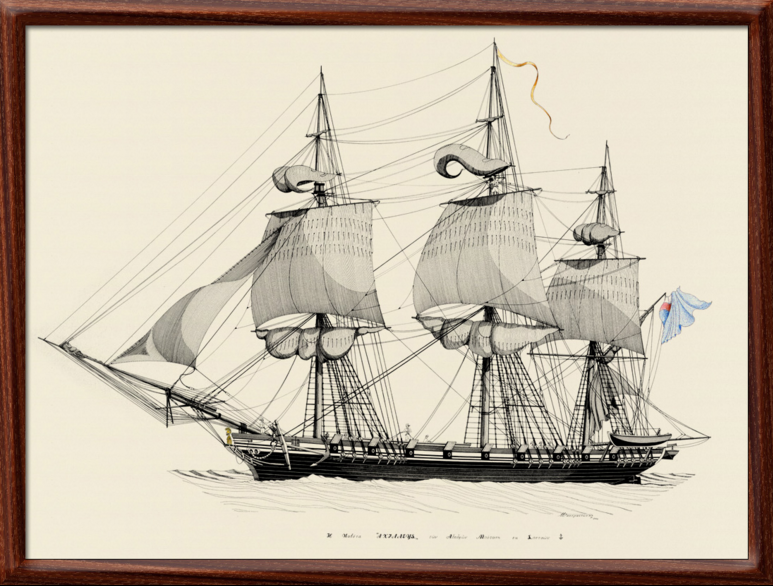
Lenght:24,32 meters

Another model:
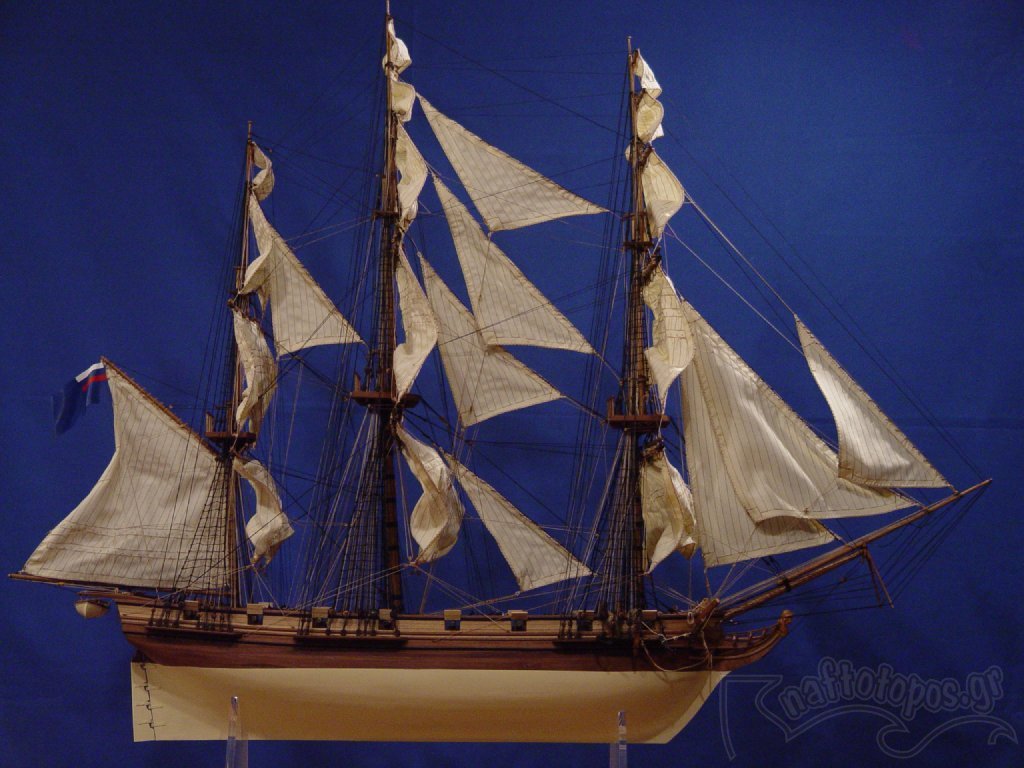
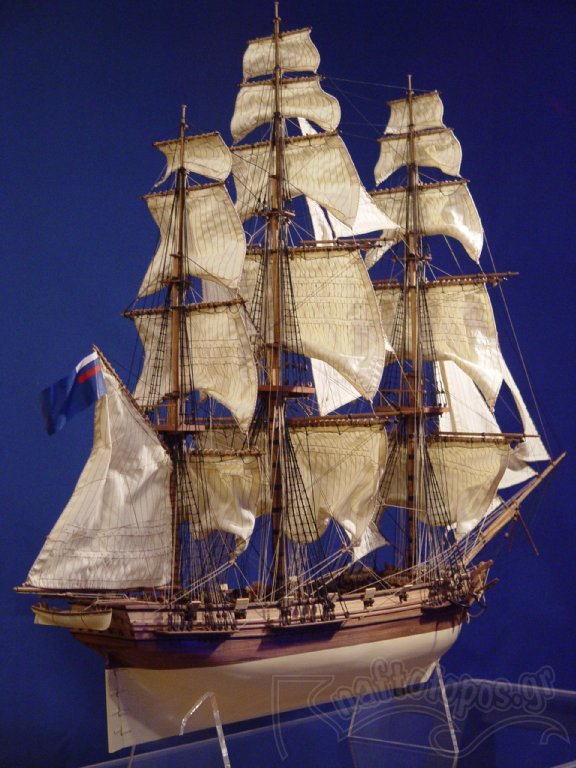
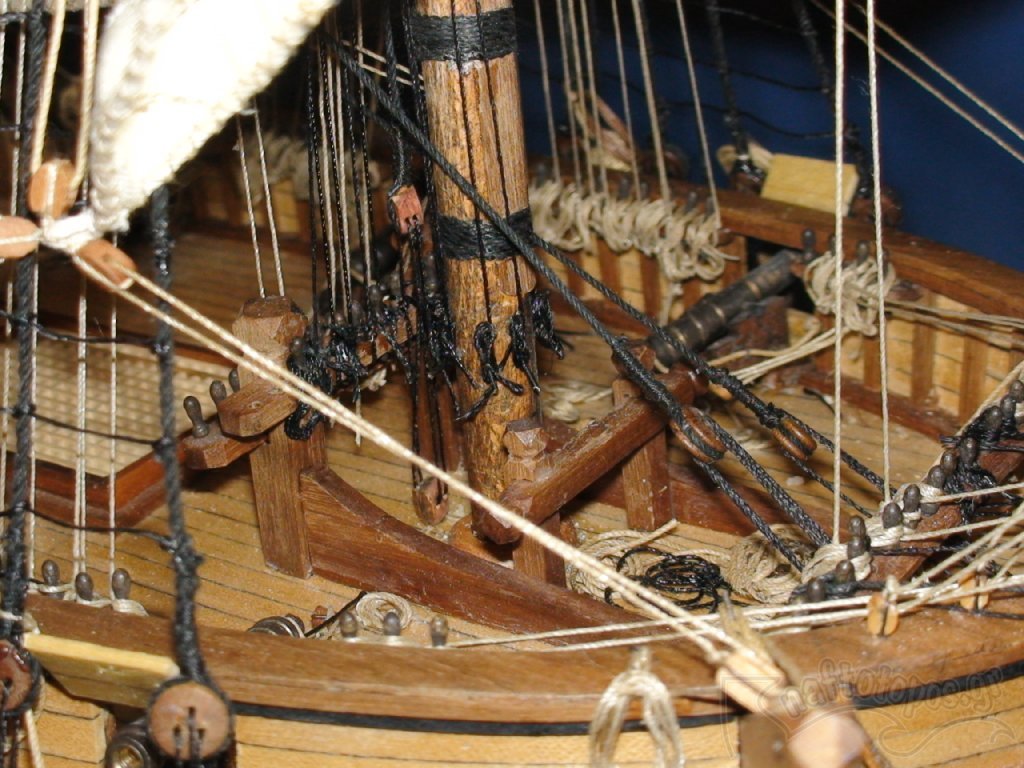
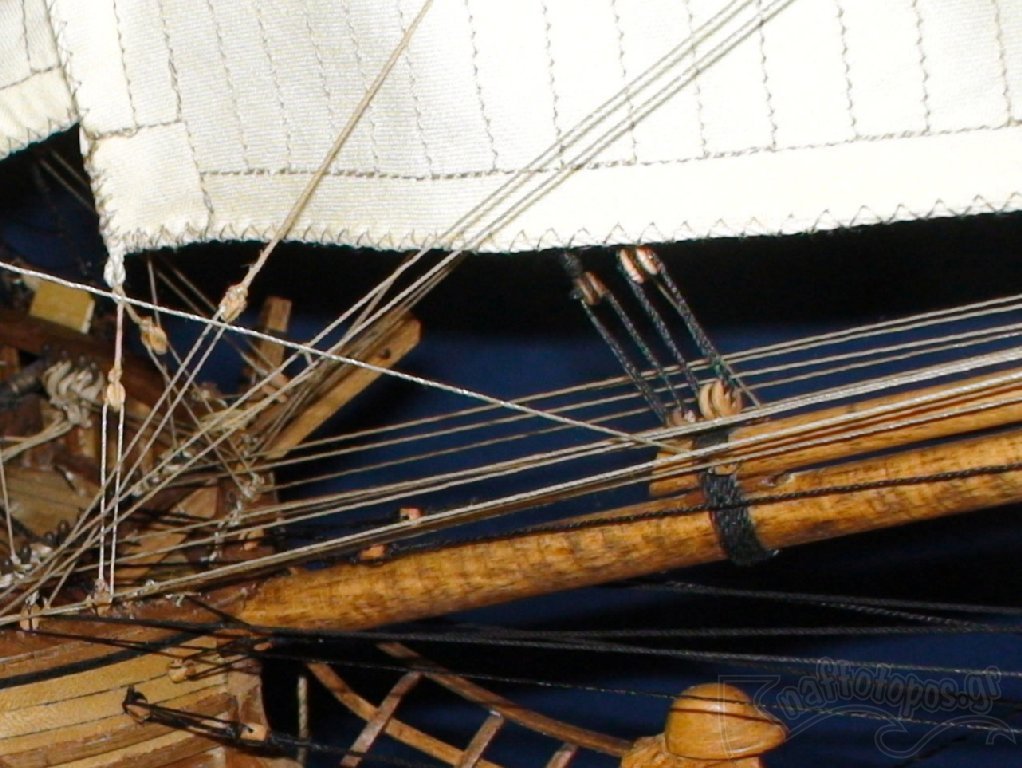
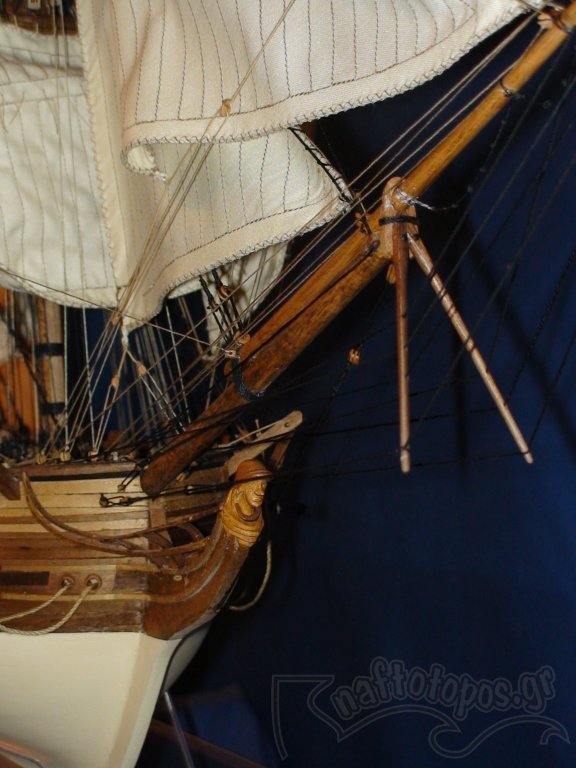
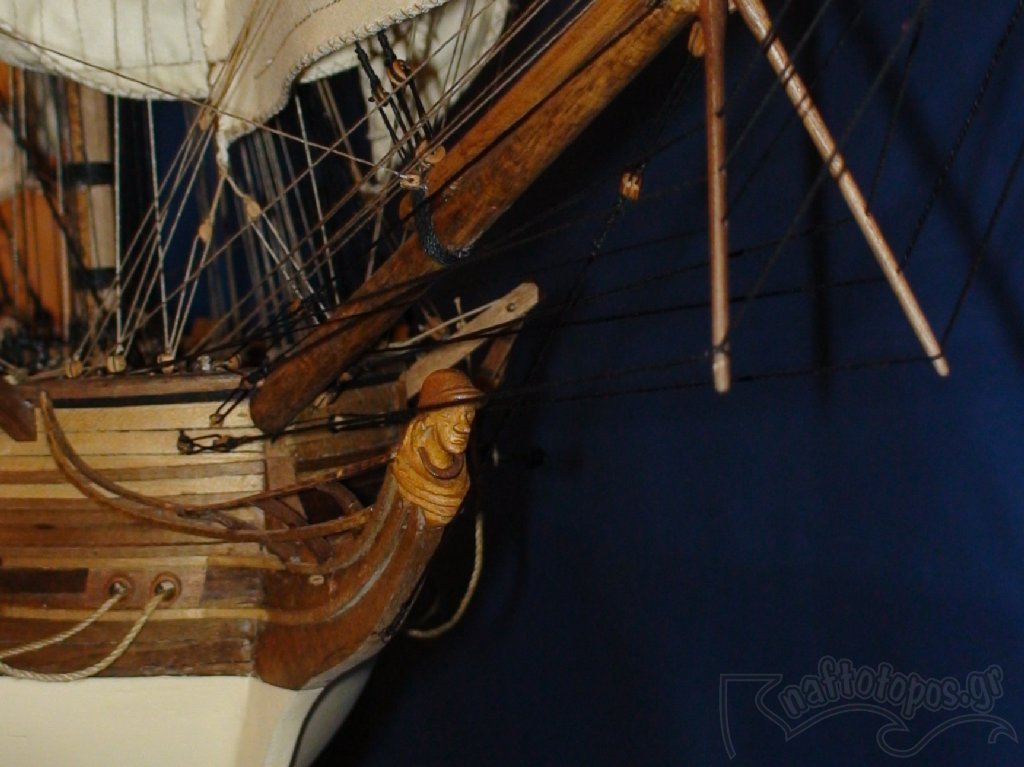
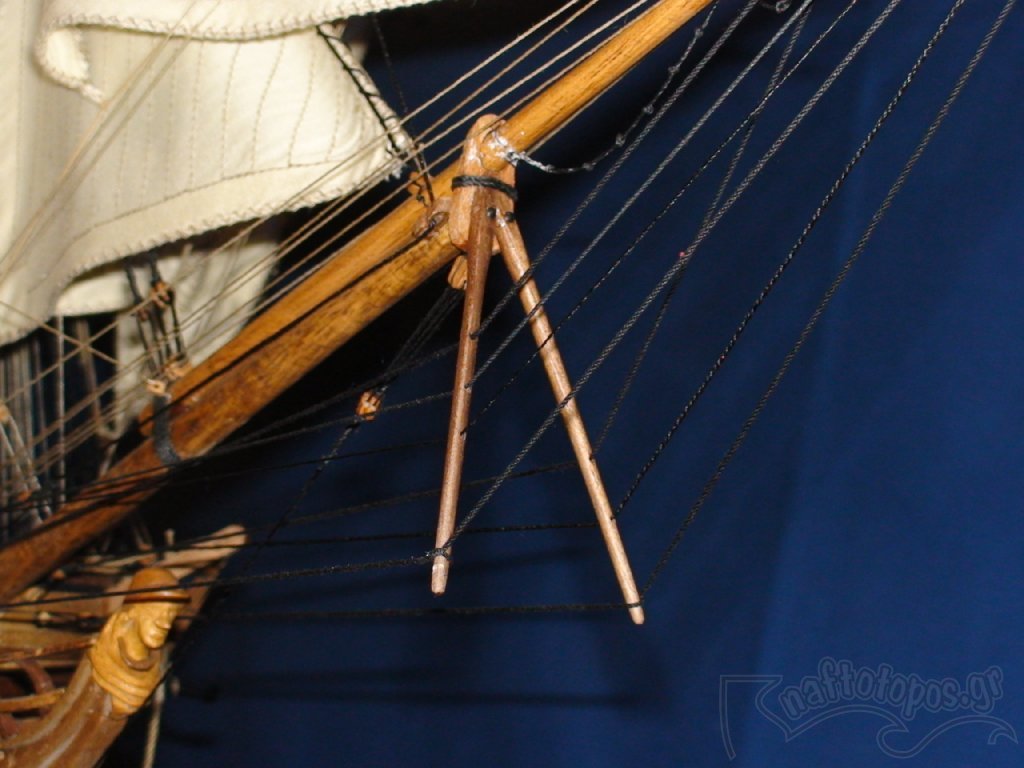
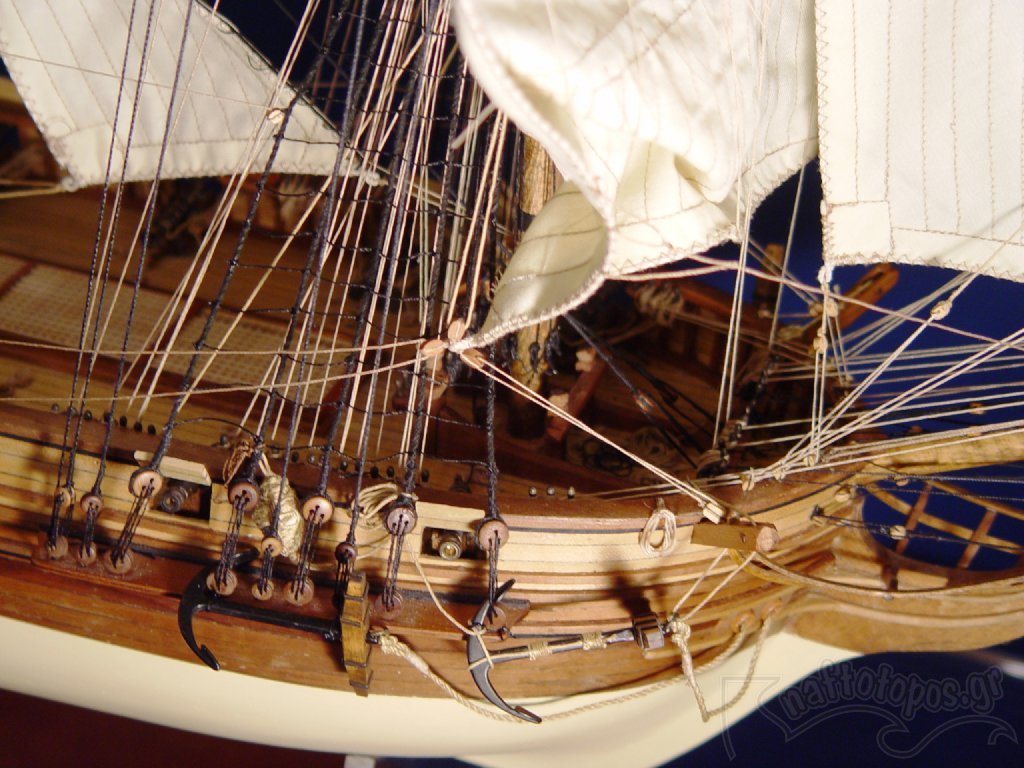
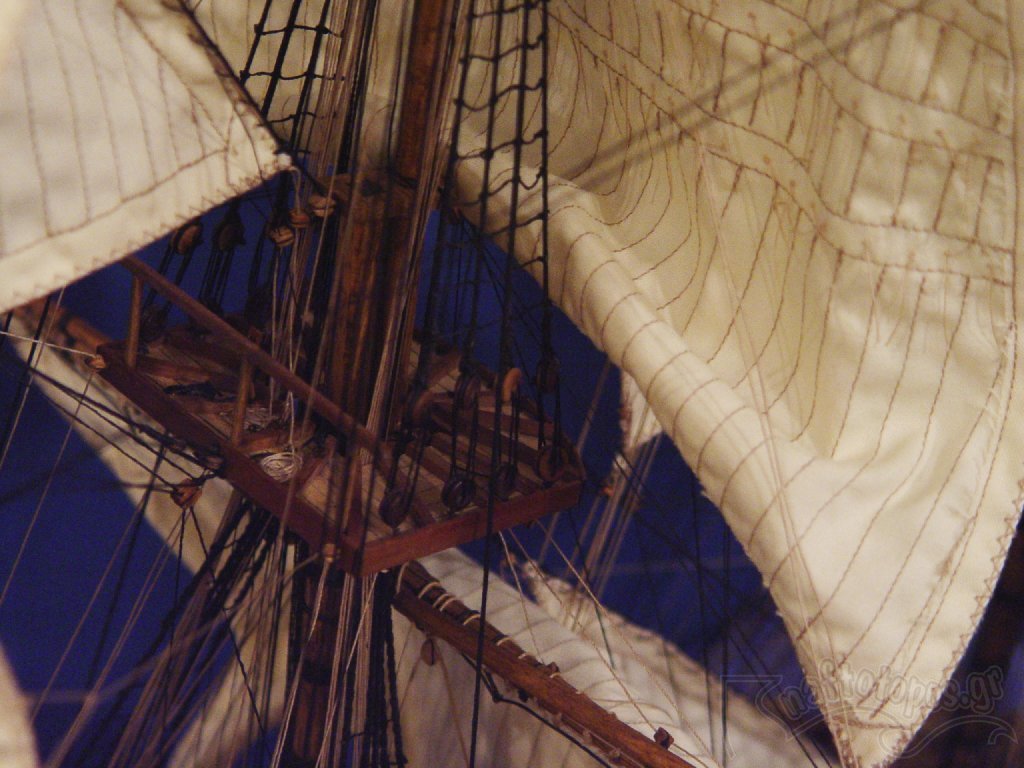
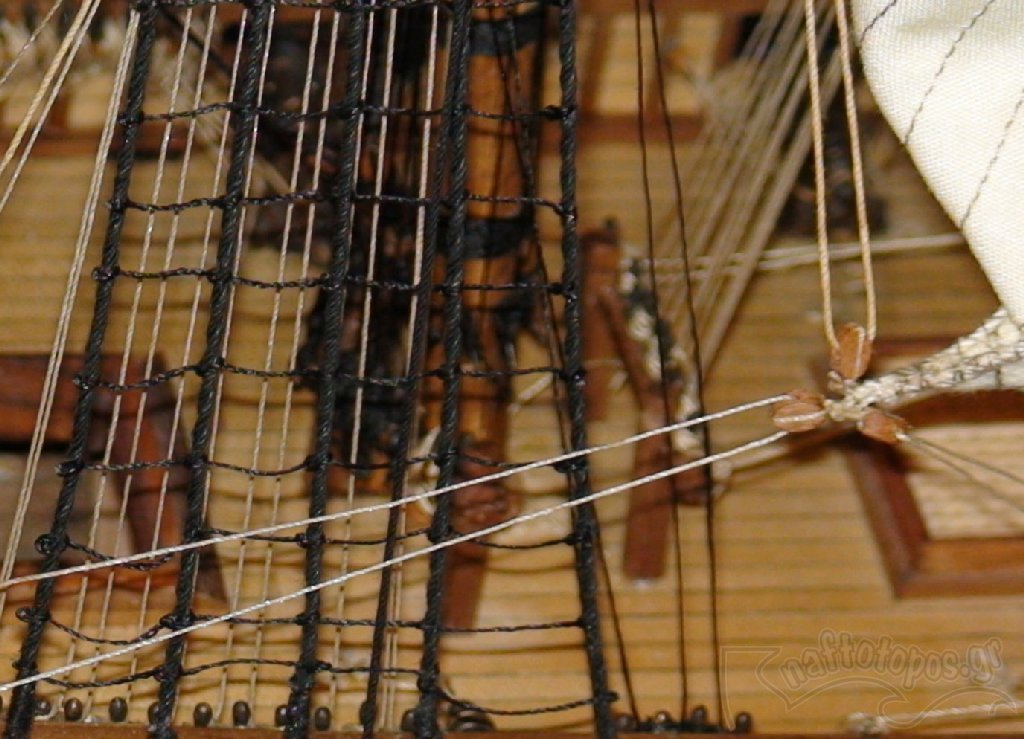
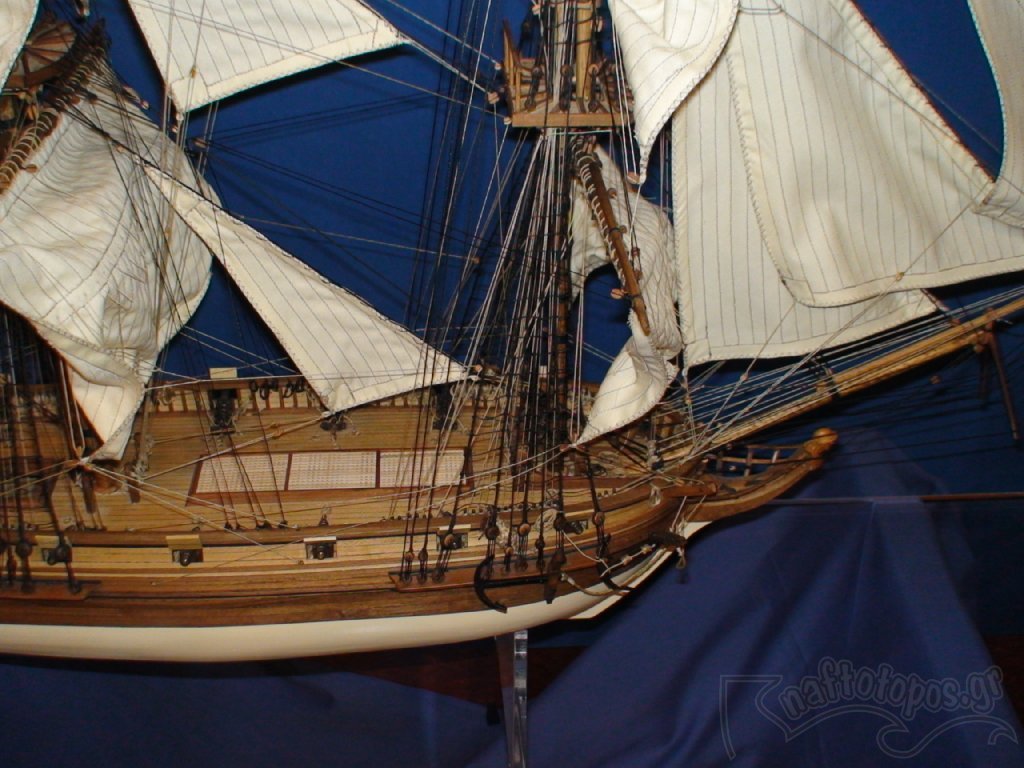
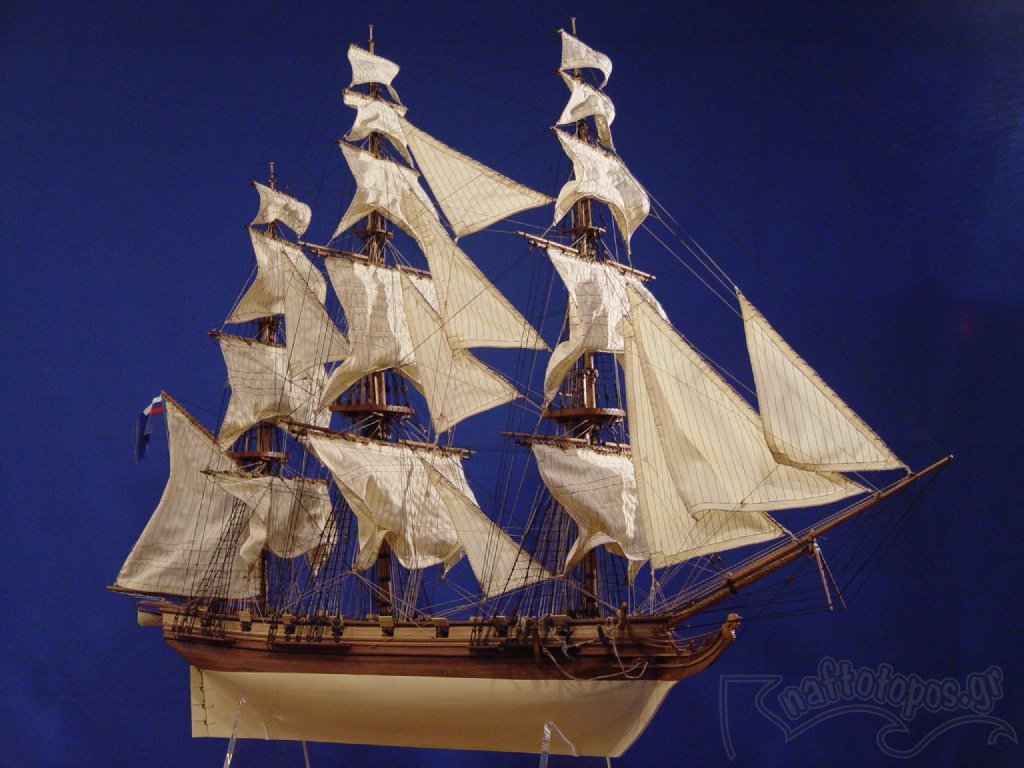
- Canute, greenstone, mikegr and 3 others
-
 6
6
-
Αmalia II
26 gun-Steam frigate
1861
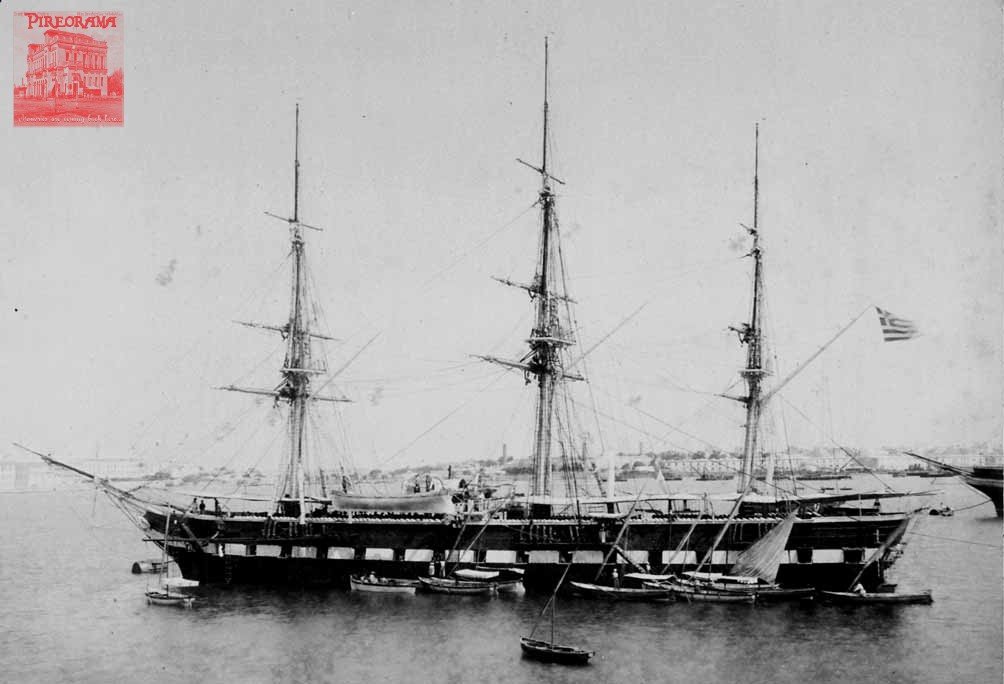
Info and history:
The steam frigate Amalia was built at the Pitcher English shipyards between 1859-1861 and on the 23rd of October 1861 she sailed to Greece.She was made completely out of wood, and had a displacement of 1680 tonnes and was armed with Paxhain guns which were bought in 1852 for Maximilian.(a Greek sail corvette acquired in 1831)
During the reign of Otto she took part in the blockade of Nafplio,for the repression of the Nafplian revolution and later for the revolution of the island of Kythnos.
In October 1862,a coup started which resulted in the overthrow of Otto and Amalia(the queen).The royal family was on board the Amalia during these events.The captain of the Amalia at that time was Leonidas Palaskas who escorted King Otto to his exile.
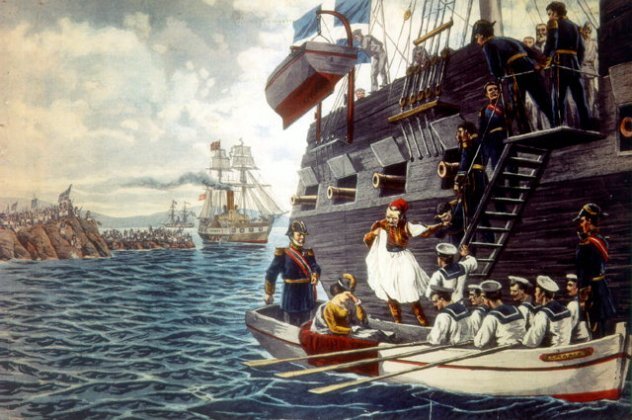
(King Otto and his wife leaving the frigate Amalia in order to board the engilsh steam frigate Scylla in the background.)
he ship after the overthrow of the king was renamed Hellas.
On the 10th of October 1863, the new King George I,arrived to Greece on board the Amalia and on the same ship,at the port of Katakolo,the Great Flag of the Septinsular Republic(or the United States of the Ionian Islands) was handed to Greece by the last High Commisioner Sir Henry Knight Storks.
On the 25th of March 1863 she anchored at the port of Kerkyra to celebrate the integration of the Septinsular Republic.
She also carried the future Queen Olga to Brindisi of Italy on November 1867.
During the year of 1869 it was decided that she was to sail for Trieste for general repairs which didn't happen because of the high costs and she was towed back to Poros.During 1878,extensive reconstruction projects happened and during the periods of 1884-1885 and 1892-1905 she was used as the headquarters of the Hellinic Naval Cadets Academy.She was disarmed in 1906 and scrapped in 1914.
Specifications:
Lenght:58 meters
Width:11,6 meters
Draft:5,2 meters
Displacement:1680 tonnes
Propulsion: 300 horsepower steam engine
Speed:9 knots
Armament: 2x 22 cm Paixhans guns and 22x 24 cm Paixhans guns
Amalia I
22 gun corvette
1836
The corvette Amalia I was built at the Poros Naval Shipyard in 1836.Her building started on the 29th of July 1836 which was supervised by the Lieutenants Koskorozis and Theocharis. She was launched on the 13 of November 1836.Her launching coincided with the wedding of King Otto and Amalia (10-22 of November 1836).This event as result named the ship after the Queen.She was considered as one of the best ships of the era.
She was mainly used for anti-piracy and VIP transport.On the 14 of October 1852 she sunk near the island of Salamina during a storm.
Characteristics:
Displacement:800 tonnes
Crew:7 officers,15 ΝCO's,103 sailors
Guns: 2x12pdr long guns and 20x32pdr carronades.
-
Agios Nikolaos(Saint Nicolas)
14-gun polacre
450 tons
1809
Owned by the famous Andreas Vokos or Miaoulis
https://en.wikipedia.org/wiki/Andreas_Vokos_Miaoulis

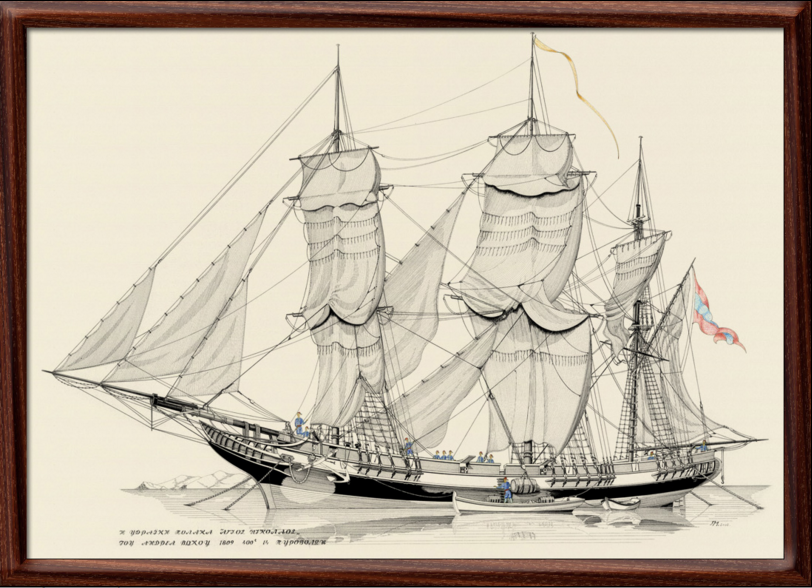
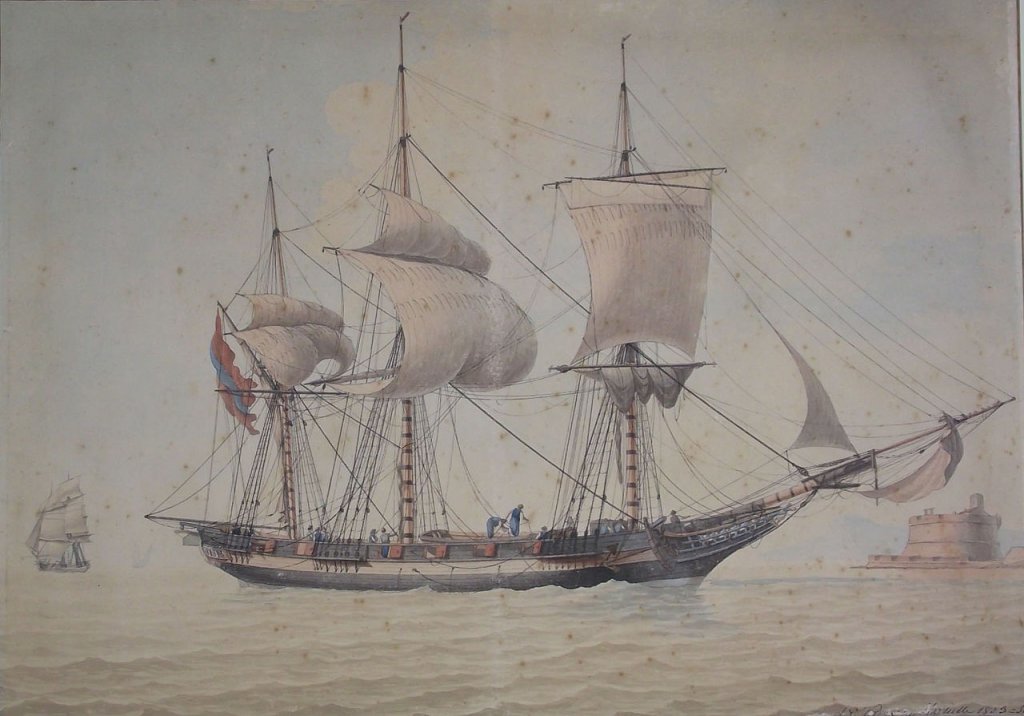
Note on the first painting by Antoine Roux:
"Greek ships visitng French ports are notable for their tall masts and the dignity of their captains."
Nautilus
Cutter(?)
Probably owned by the regent of Greece:https://en.wikipedia..._von_Armansperg

Themistocles
16 gun frigate(?)
1813
Owned by the Hydriot Tombazis family.
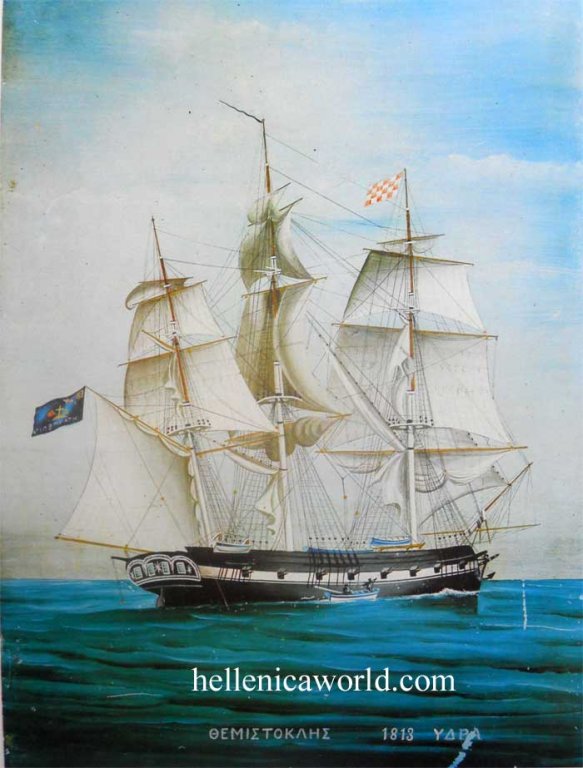
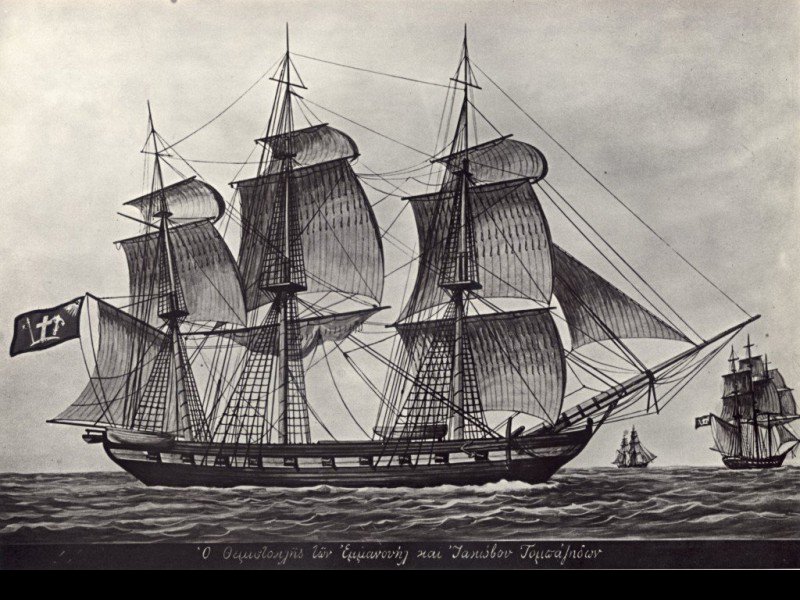
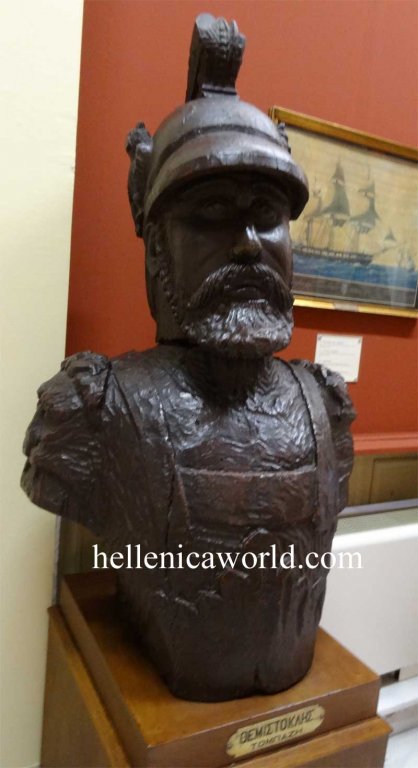
- greenstone, Altduck, Tadeusz43 and 4 others
-
 7
7
-
-
Iraklis(Hercules)
16 gun (classed as polacre from the source)
Owned by the Hydriot,Tsamados family
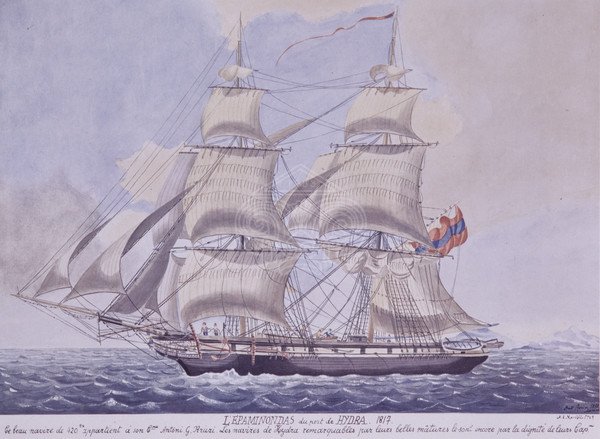
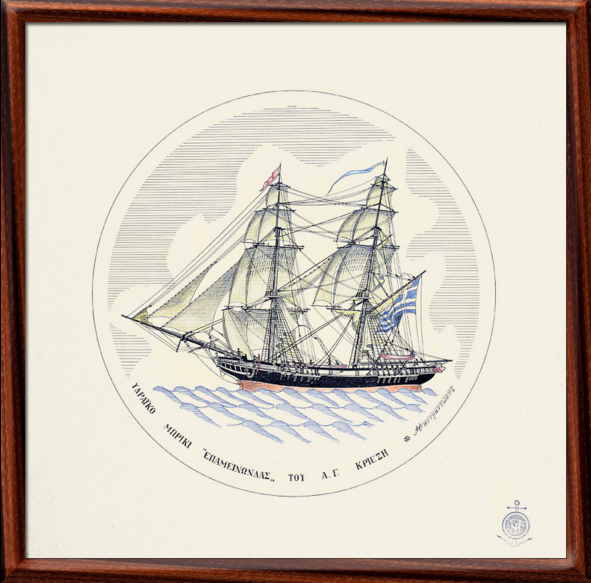
Panagia
12 gun (galliot according to the source)
Owned by the Hydriot,Kriezis family
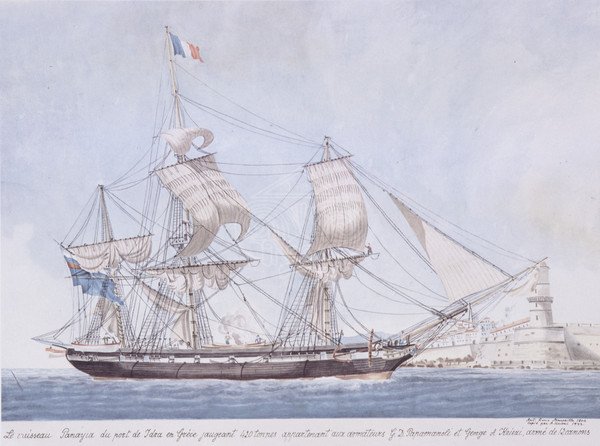
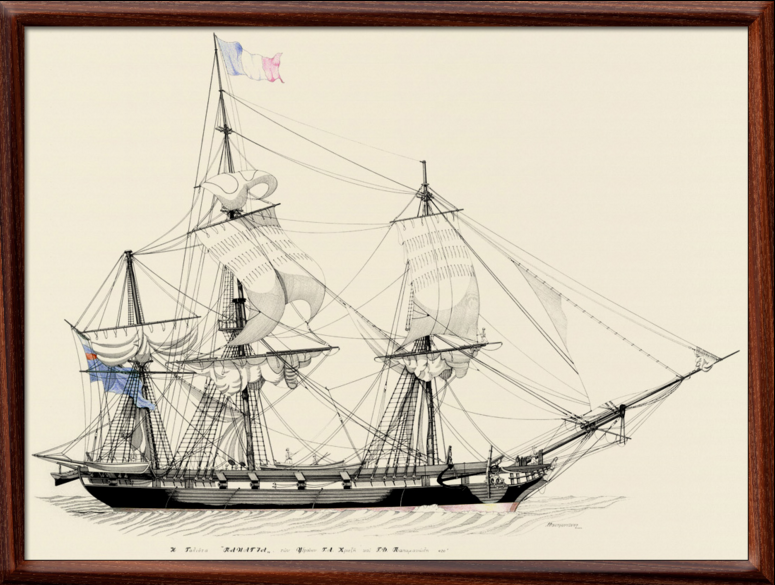
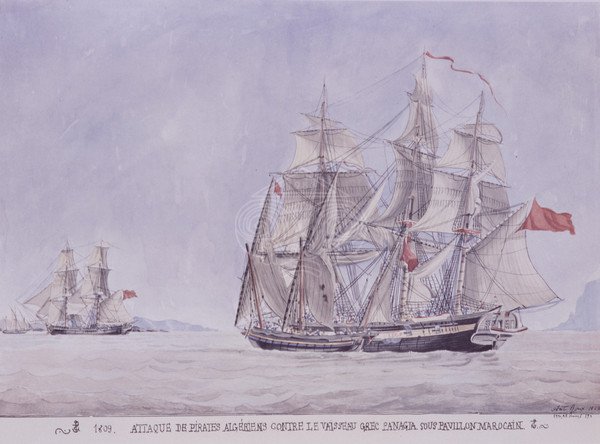
1809. Attack by Algerian Pirates of the greek Panagia under Moroccan flag
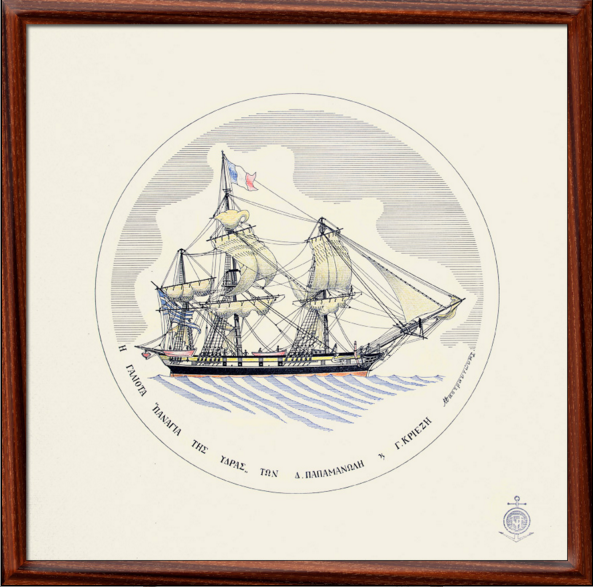
Here before the rigging was changed:
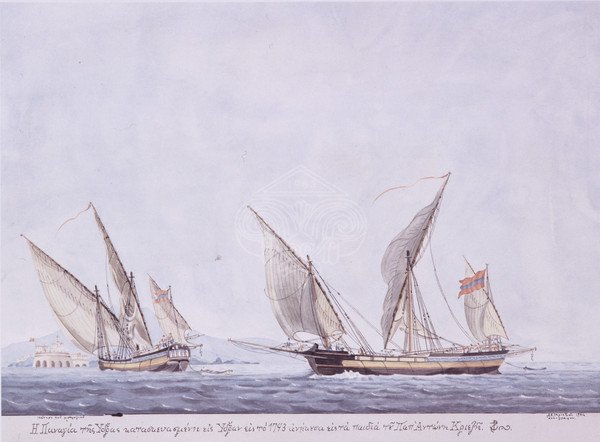
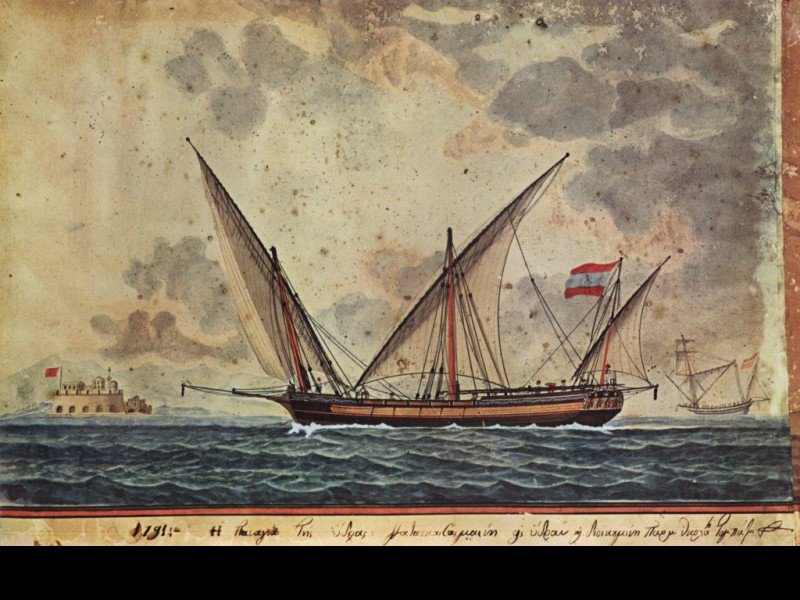
Rozalia
4-gun Polacre
1790
Owned by the Hydriots, Kriezis-Papantonis-Papamanolis
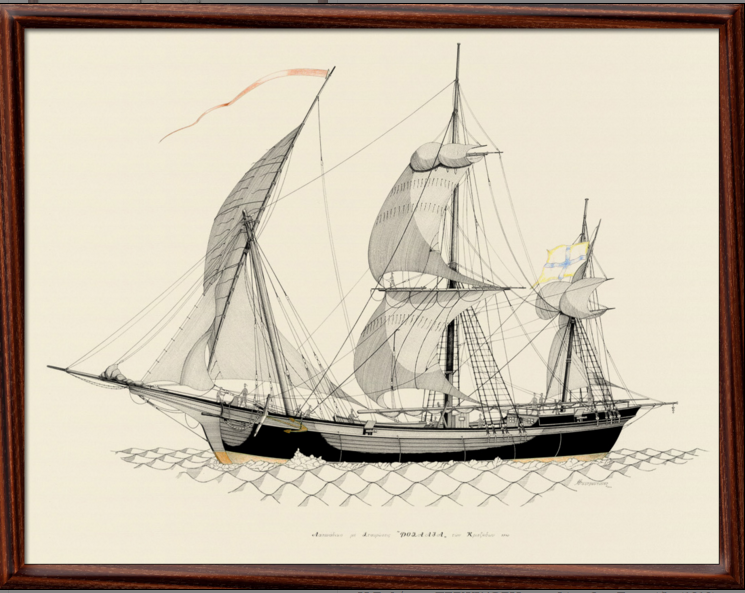
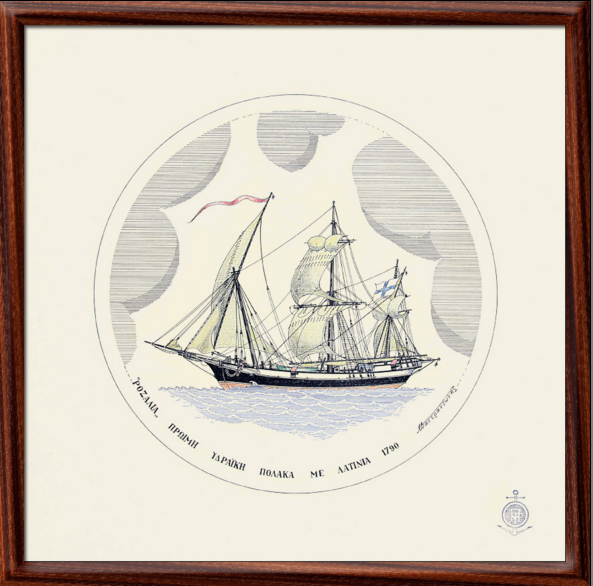
-
-
-
Pericles
8-gun brig
30 June 1820
Owned by the Spetsiot,Hatzianargirou family
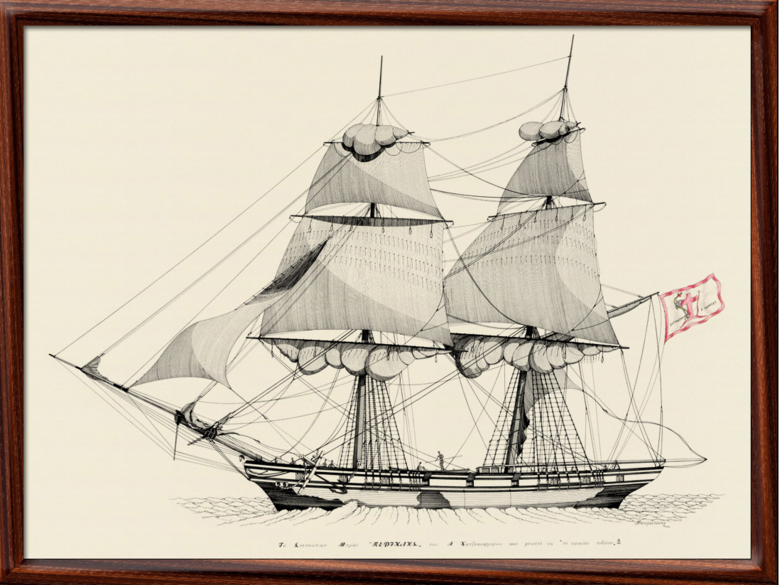
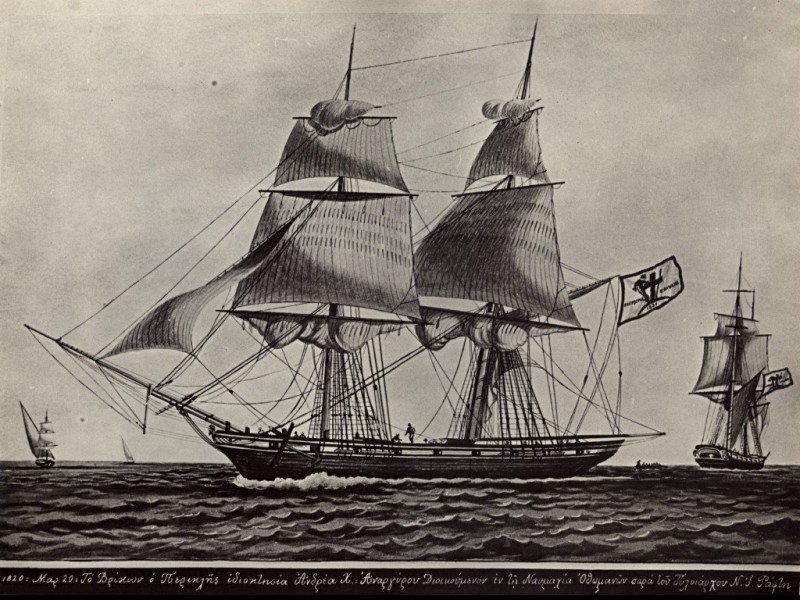
Lenght:21,76 meters
Weight: 420 tons
Timoleon
16(?) gun frigate(?)
1813
Owned by the Hydriots,Ioannes Orlandos and Lazaros Pinotsis
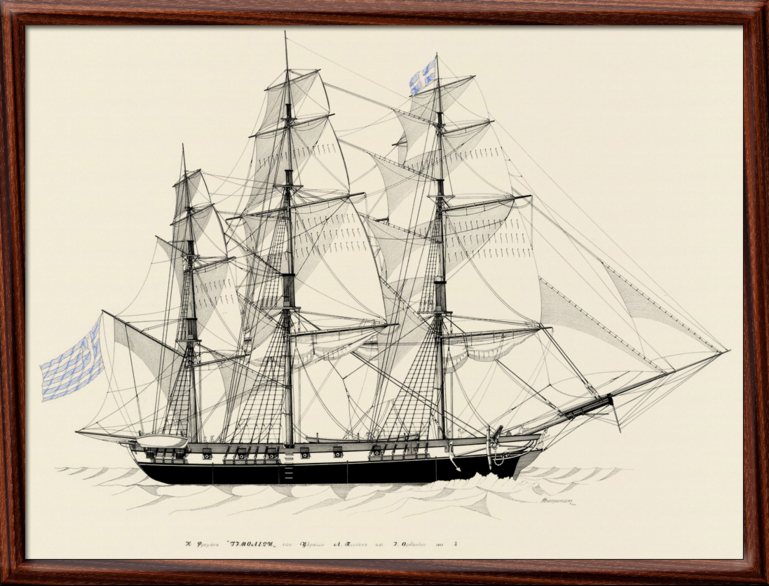
Lenght: 21,952 meters
It was also called as a "war-brig" even though it is three masted.
-
Agamemnon
18 gun brig
1820
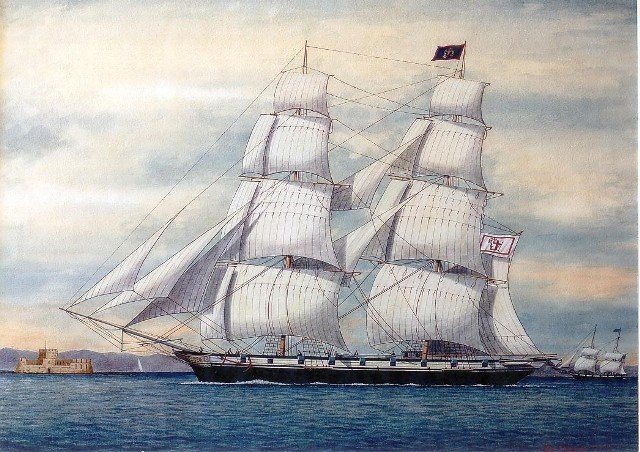
The flag of the ship.It is based on the byzantine eagle.
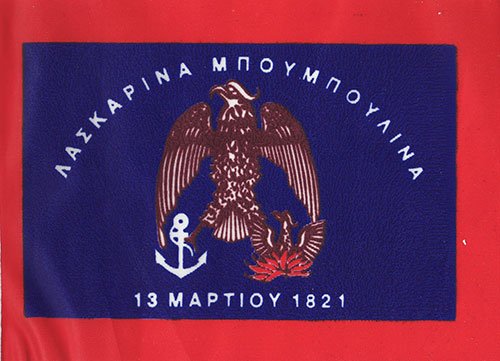
The figurehead:
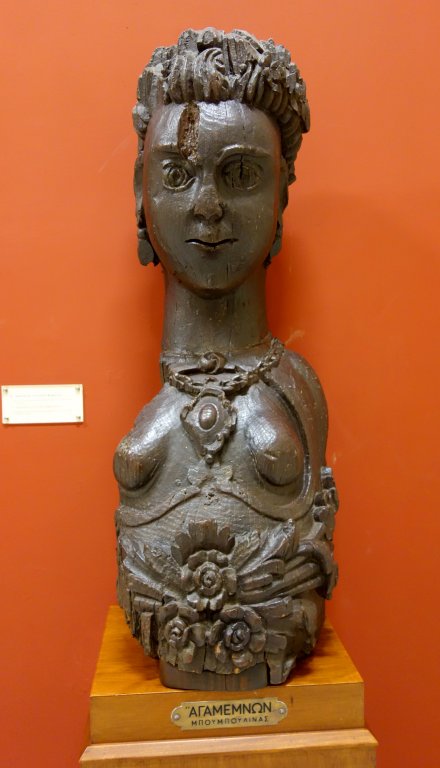
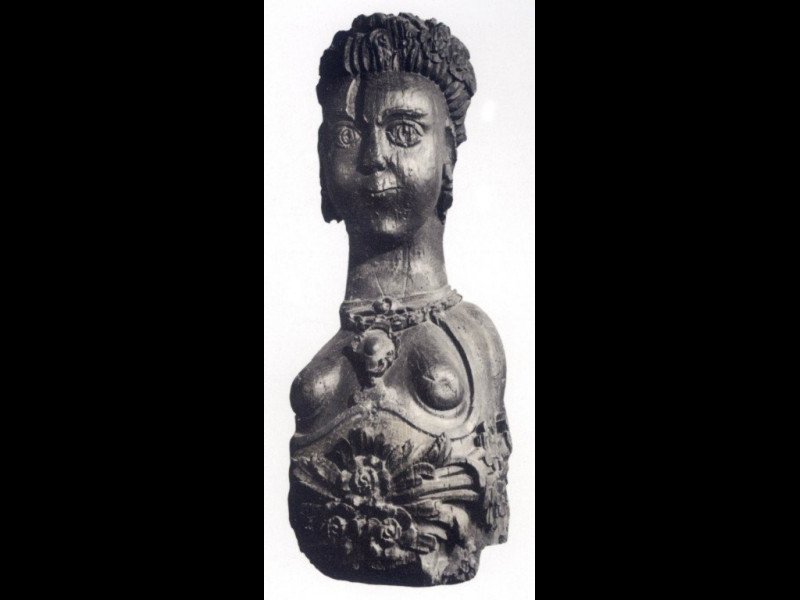
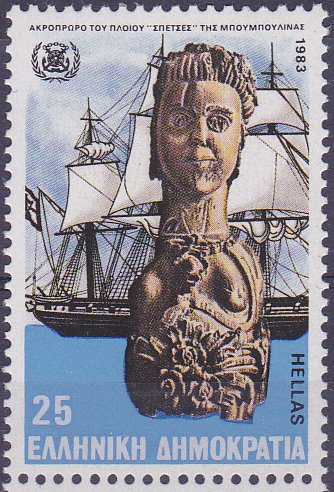
The 30,72 meter long Agamemnon.Armed with 18 (possibly 12pdr) long guns.Property and flagship of Laskarina Bouboulina the only woman in world naval history,until recently,to hold the rank of Admiral.
The Agamemnon was burned by Andreas Miaoulis along with the frigate Hellas and the corvette Hydra in the naval base of Poros, during the Greek civil war in 1831.
-
-
Holy Trinity(Agia Trias)12 gun polacre
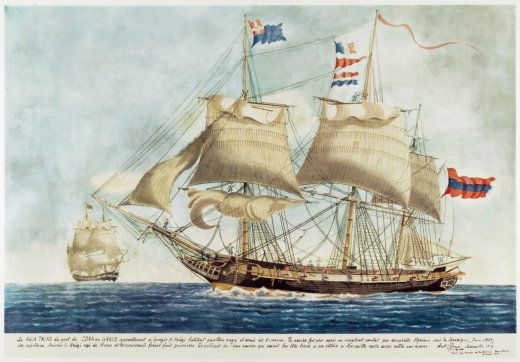
The ship AGIA TRIAS from the port of Hydra in Greece owned by George. A. Kriézis under her royal flag with 8 guns. That ship was captured by Algerian pirates after a bloody fight, South of Sardinia in June 1809. Her captain Antonios Kriezis aged of 18 years ( and his crew were held prisoners.
Weight:380 tons
Crew:68
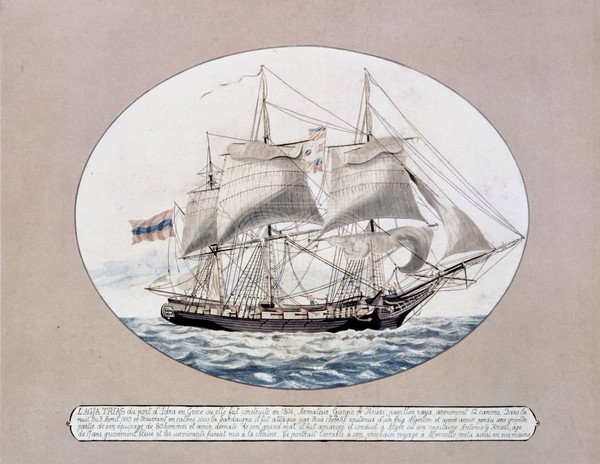
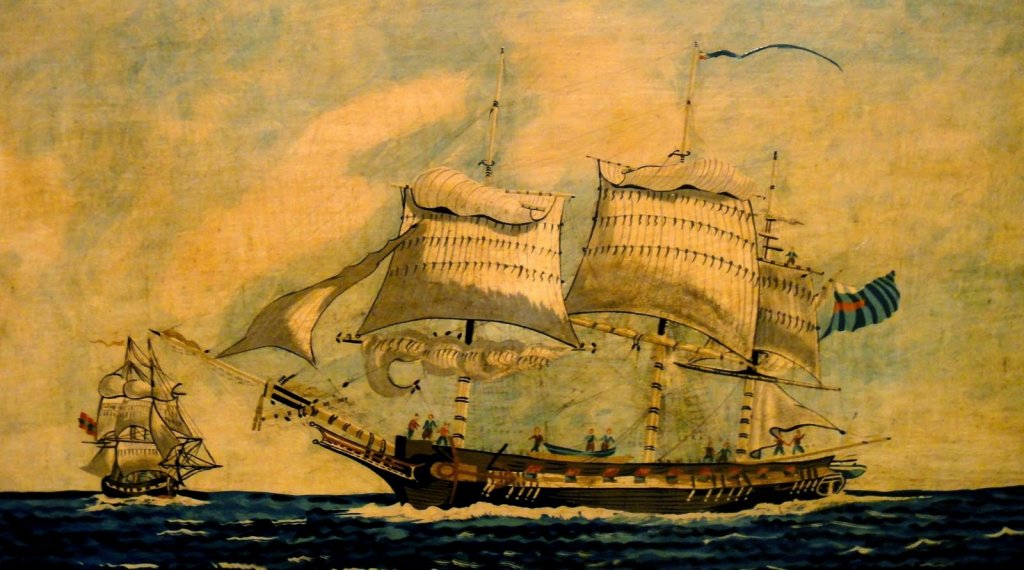
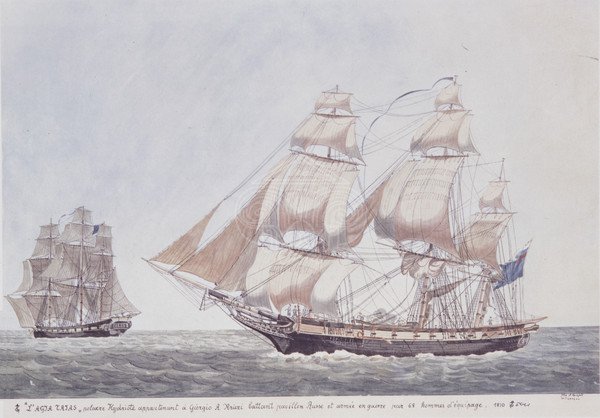
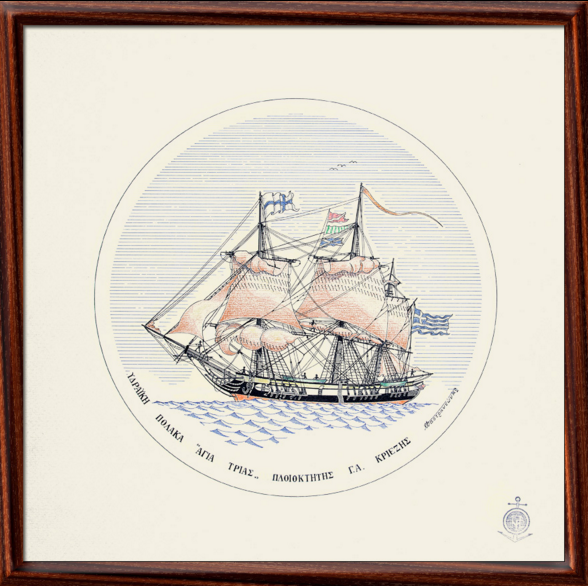
-
Steamer Karteria 1826
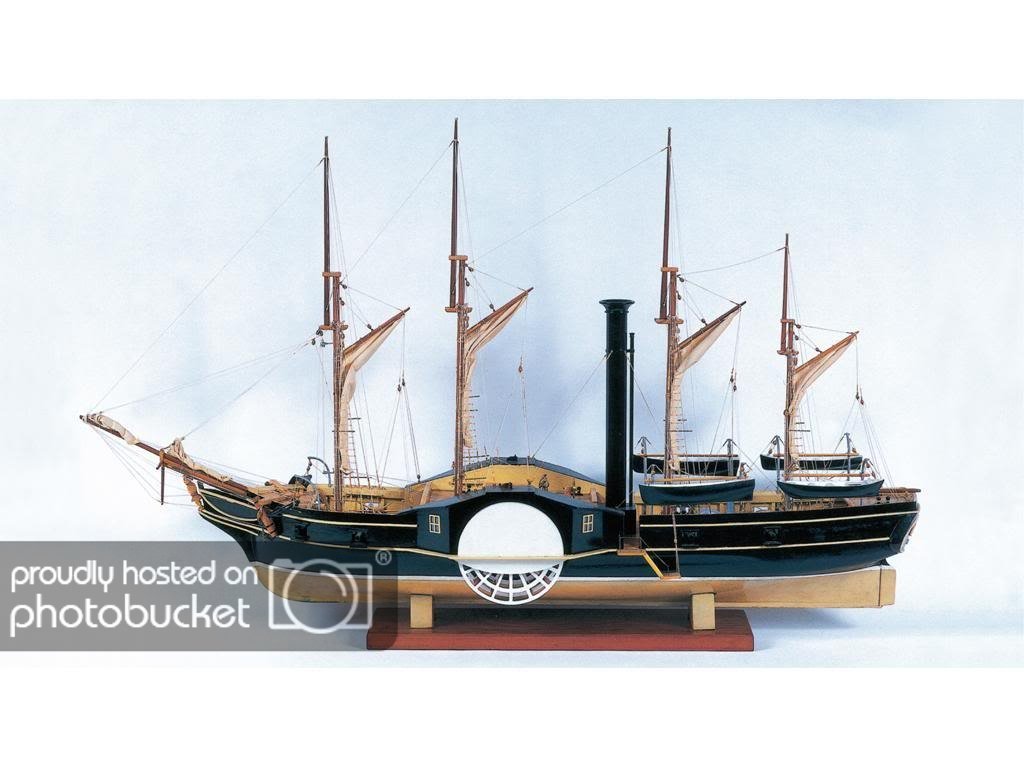 Info and history:Built in London for the Greeks, Karteria was possibly the most modern warship in the world when it entered service in 1826. She was ordered, part financed and captained by retired Royal Navy officer, Captain Frank Abney Hastings.
Info and history:Built in London for the Greeks, Karteria was possibly the most modern warship in the world when it entered service in 1826. She was ordered, part financed and captained by retired Royal Navy officer, Captain Frank Abney Hastings.At the age of 11, Hastings had taken part at the Battle of Trafalgar on HMS Neptune. He rose to commander until 1820 when due to an incident with a senior officer he was Hastingscompelled to leave the service. A great philhellene, in 1822 he went to Greece to serve on Tombazis’s ship "Themistoklis". In 1824, he managed to secure £10,000 of the £2,000,000 of the second Greek loan from England, to finance Karteria; he paid for her guns himself. A year later, he was appointed commander-in-chief of the Greek revolutionary navy.
Karteria was classified as a four-masted sloop-of-war that operated under sail while travelling, but could be propelled by steam-powered paddles in battle. Captained by Hastings, armed with 68-pounder guns and equipped with on-board furnaces to provide red-hot incendiary shots, Karteria was deadly against the older wood and sail ships of the Ottoman navy. In 1827 alone, she fired 18,000 rounds and sank several enemy ships.
Karteria is most notable for being the first steam warship in the world to be used in battle (the first steam warship built was the American USS Demologos from 1814). Apart from Karteria, five more steam warships were ordered. Two of them, "Epiheirisis" and "Ermis" entered Greek service before the war was over, one blew up during trials and two were never completed and were left to rot on the Thames.
Materials used for construction are described by Hastings, in his Memoir of 1828:
" The ‘Karteria’ was built with her timbers close and caulked together, and would therefore, have floated without planking. I had several opportunities of remarking the advantage of building thus, to resist shot; nothing less than a eighteen pounder ever came through us; this, ’tis true, might be partly attributed to Turkish bad powder, but those shot that did come through, always made a nice clean round hole without a splinter. However, against shells it would have a disadvantage, as they would be more likely to stick in it. Perhaps if shells became generally used, it will be proper to make the upper works of a ship as slight as is consistent with strength, and iron ribs might perhaps be good. The ‘Karteria’ had another peculiarity in her build – two solid bulkheads enclosing the engine room, and caulked and lined, so as to be water tight, the intention of this was, in the event of one part of the ship being leaky from any cause whatever, the water could not flow into another part of the ship. This arrangement, which is due to the ingenuity of Mr Brent, the builder, once saved this ship from fire, which broke out with great force in the after-part of the engine room, and would have communicated to the shell room very quickly. But for this bulkhead, which kept the fire forward, and gave us time to subdue it. I see no reason why all men of war should not be furnished with similar partitions. The same builder saved another ship (the Rising Star) from sinking, by this contrivance."
Specifications:
Displacement: 233 tons
Propulsion: two steam enginers of 85hp and four masts with schooner rigging
Consumption: 7 tons of coal per day
Speed: 7 knots
Length: 38.4m
Width: 7.6m
Armament:
4 x 68-pounder carronades and 4 x 68-pounder guns of a new design based on a model by Frank Hastings
Crew:
185 (17 officers, 22 petty officers, 32 gunners, 110 sailors and 4 cooks-cabin boys)
Pictures and a plan:
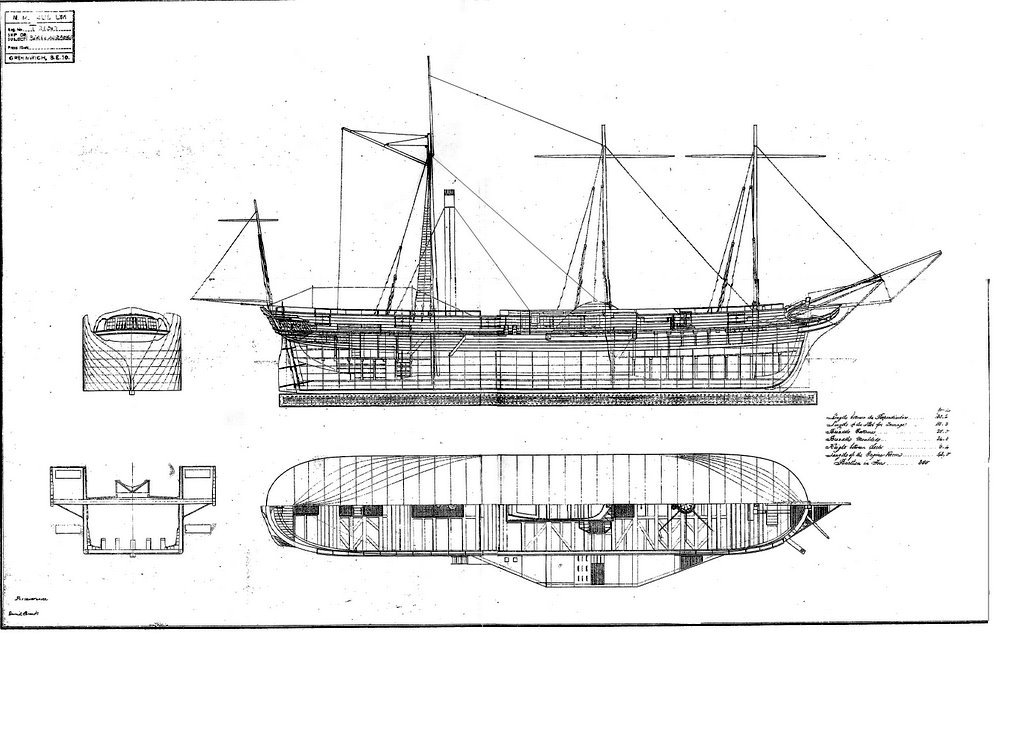
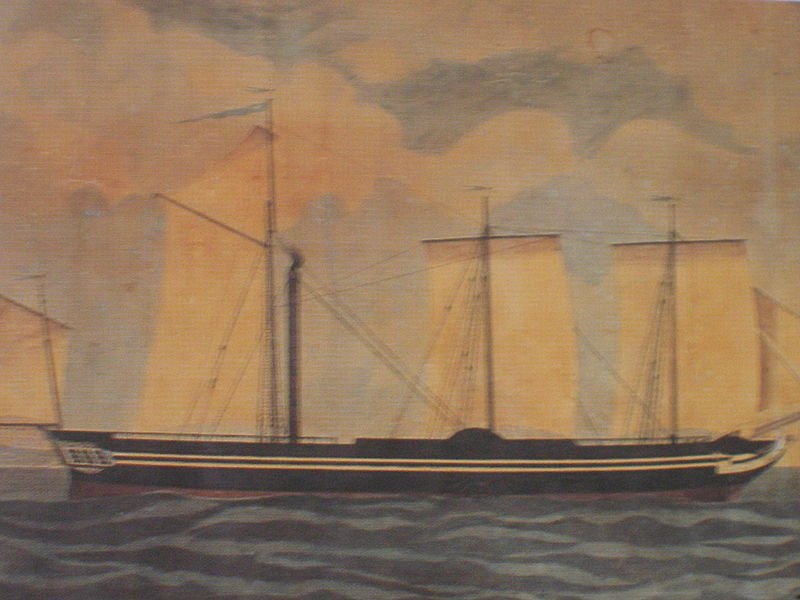
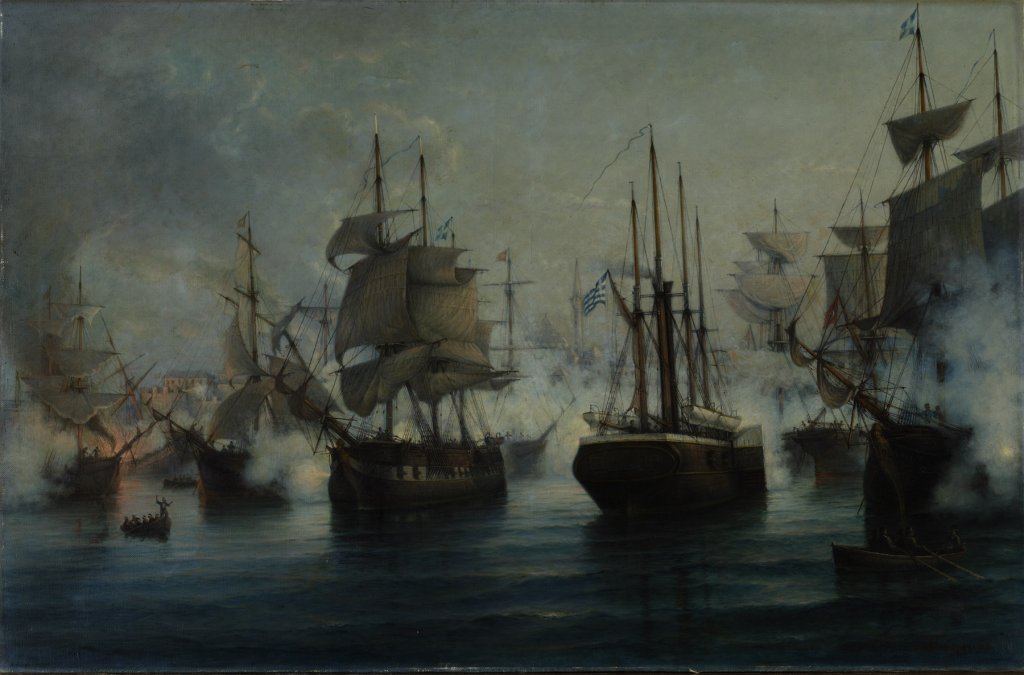
The ship's most celebrated success was a raid on the port of Itea, near Salona (Amfissa) in the Gulf of Corinth, on 29/30 September 1827, where it sank 9 Ottoman ships.
Painting showing the Karteria (centre-right, with sails down and smoke issuing from funnel) in action at the Battle of Itea (1827). Note that the Karteria is advancing under steam against the wind, in contrast with the two flanking Greek warships.
The figurehead: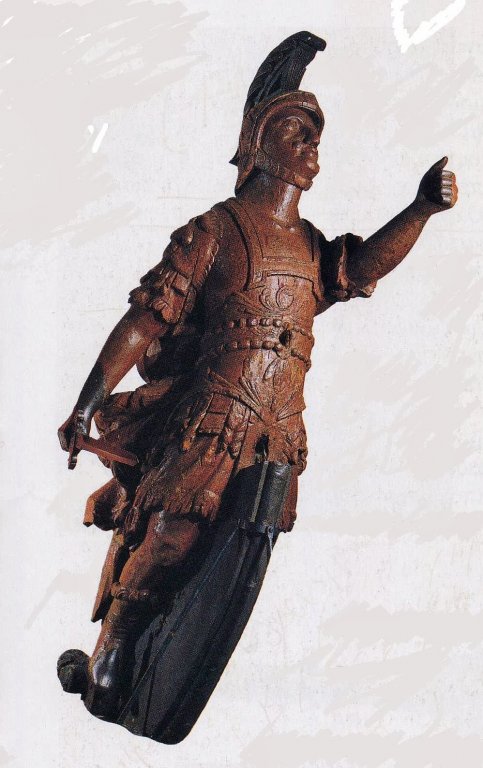
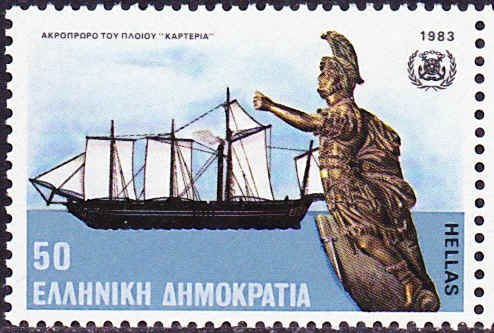
-
Brig Ares(Aris) 1807
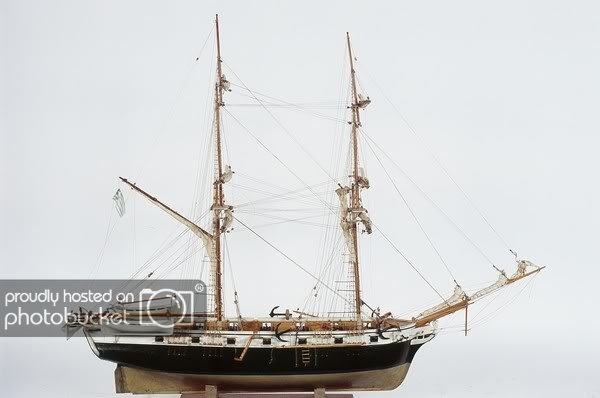
Info and history:
Aris, along with 5 other brigs, were anchored at Sphacteria when, on the morning of April 26, the combined Ottoman-Egyptian fleet arrived and started its attack on the island, bombarding the Greek positions and disembarking numerous troops. Most captains of the ships were on land, along with part of their crews, who were manning the island's cannons. The other ships sailed before the Ottoman fleet could seal off the bay, and after fighting off the Ottomans, were able to escape. The crew of Aris however still awaited their captain, who had been killed.
Aris sailed through the midst of the Turco-Egyptian fleet, being attacked on all sides for several hours and facing in total 32 ships one after another, before reaching the open sea. Casualties among the crew were just two dead and six wounded.
One of the most famous Greek brigs that took part in the Greek War of Independence.
General characteristics:
Displacement:350 tons
Lenght:30,5 meters
Width:8,8 meters
Draft:4,9 meters
Crew:82
Guns(as built):
16x12pdr cannons
(1829):
2x12pdr cannons
10x24pdr carronades
The plans today do not exist.Although according to some testimonies they existed until WW2.The model pictured above is housed in the building of the Old Greek Parliament and was built at the begining of the 20th century when the plans and the ship itself stil existed.So consider the model as accurate as it can get.She was sank with honours in 1921.
About the model show in the second link:
For its building another model in the posession of a Greek Admiral was used which according to him it was built by a naval cadet who served on the ship itself.
The figurehead:
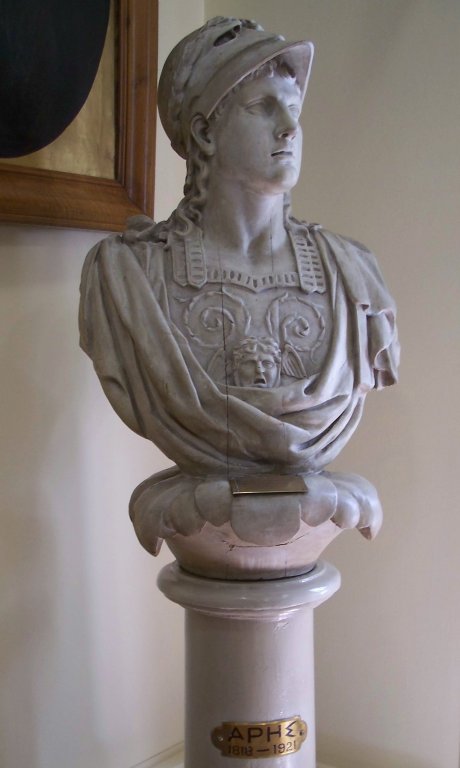
The brig Ares at Poros in 1905:
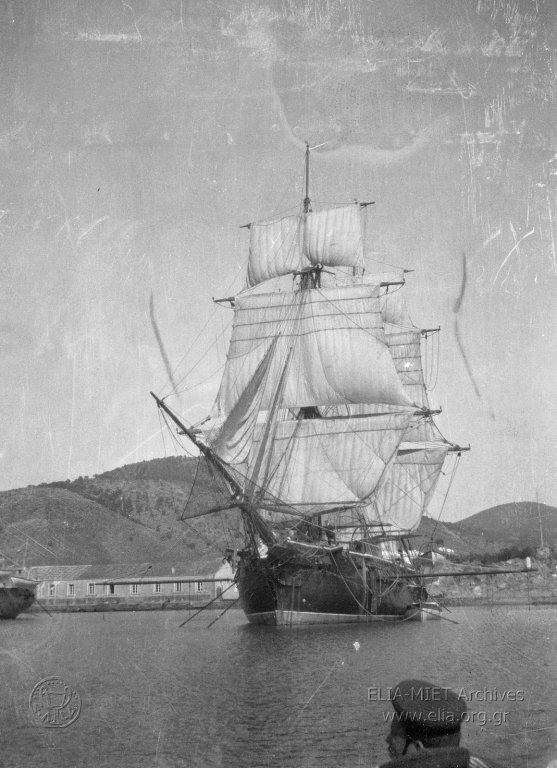
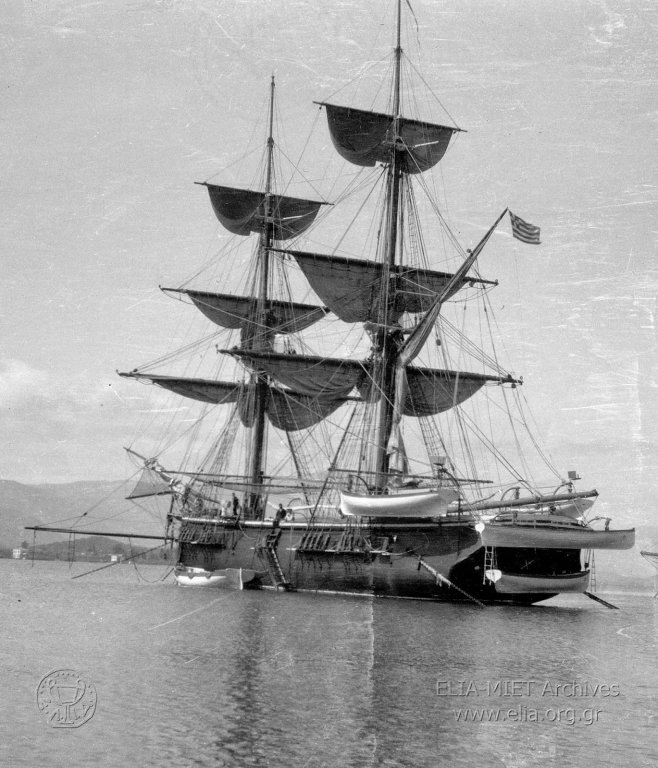
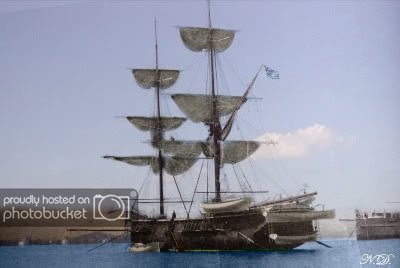

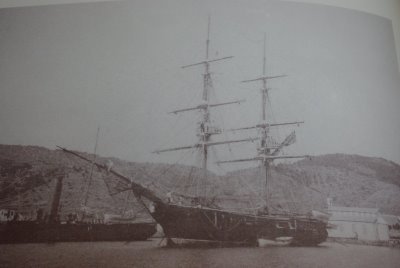
Sources:https://en.wikipedia.org/wiki/Greek_brig_Aris
http://greek-war-equipment.blogspot.gr/2011/01/1819-1921-brig-aris_19.html
Another model:http://www.naftotopos.gr/index.php?option=com_content&view=article&id=239:briki-aris&catid=166&Itemid=530〈=el
A model of Ares before his conversion to a fighting vessel: https://www.bonhams.com/auctions/19192/lot/2047/
-
Frigate Hellas 1826
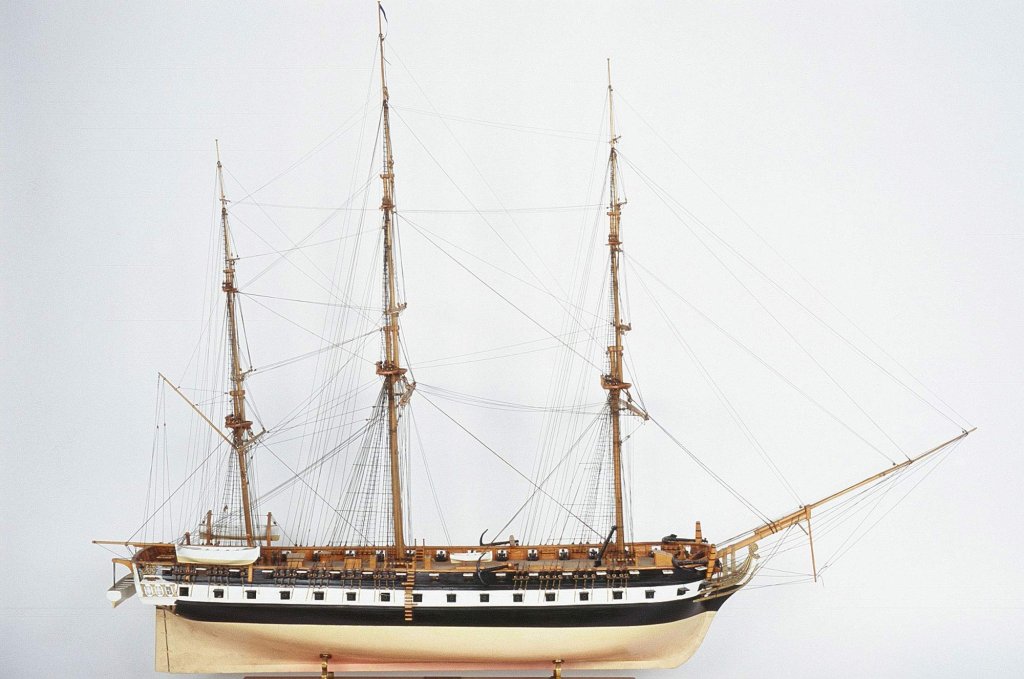
Info:
Length:54 m
Width: 14m
Tonnage:1728 t
Guns:48(16 livres) + 16 carronades(42 livres)
Draft:4.2 mHer sistership: http://www.history.navy.mil/research/histories/ship-histories/danfs/h/hudson-i.html
Another model:
Her plans:
-
Hello everyone this is my first post in the forums.I have been researching Greek ships of the 19th century and i would like to share what i have gathered so far since there isnt much out there.

Notes:
1)The caliber of the guns on most ships is uknown.Although it is speculated that most of them carried 12pdr guns.
2)Gun number and gun ports don't always match.Some pictures are more artistic than realistic.
3)Some names of the ships are the same.Howewer they were either owned from a different family or from a different island.In most cases either from the island of Hydra or the island of Spetses or Psara.
http://https://en.wikipedia.org/wiki/Hydra_(island)
https://en.wikipedia.org/wiki/Spetses
4)The models and the drawings shown below were not made by me.
Corvette Loudovikos(Louis) 1836
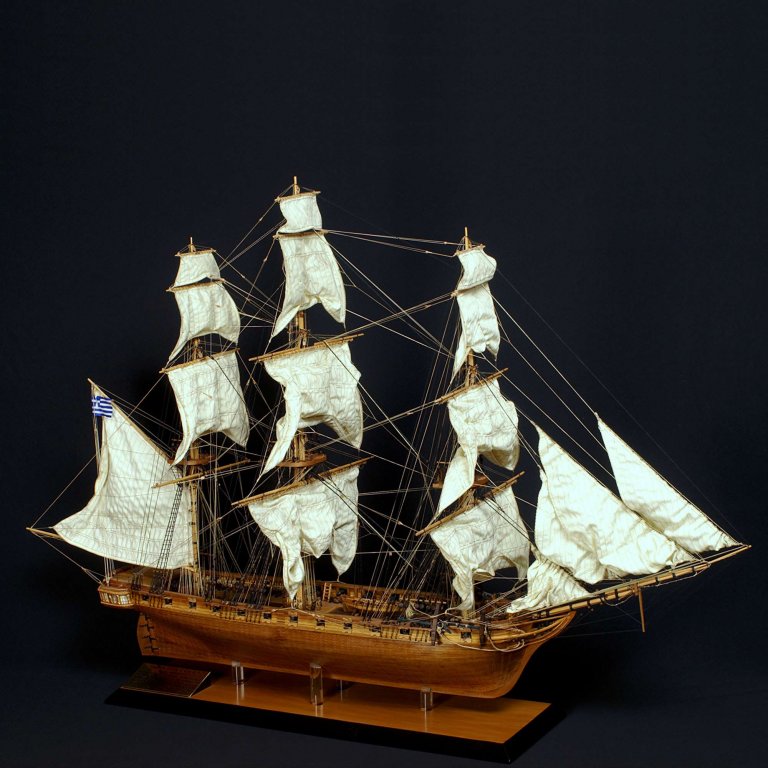
The model above is exhibited in the Hellenic Maritime Museum.
Info:
Loudovikos was a corvette of the Hellenic Navy built in 1838 at the Poros Naval Shipyard, designed by naval architect Georgios Tombazis. It was a relatively large ship (length 44.1 m, 1000-ton displacement), was armed with two 22-lb plus four 20-lb long guns, and twenty-four 32-lb carronades, and had a crew of 182. The ship was not operationally utilized, and since 1846 it was used as a training ship (renamed Messolongion in 1862). It officially remained in service with the Hellenic Navy until 1873.
Lenght:44.1 meters
Width:11.7 meters
Draft:4.5 meters
Tonnage:1016 tons
Crew: 182Armamament: 2 x 22 pounder guns
4 x 20 pounder long guns
24 x 32 pounder carronadesAnother model:http://www.greekshipmodels.com/default.aspx?pageid=170
Her plans:https://www.dropbox.com/s/74c6u3xxa3j9up7/LOYDOVIKOS%20225.JPG?dl=0
https://www.dropbox.com/s/o8we1m1pp4zcg52/LOYDOVIKOS%20226.JPG?dl=0&preview=LOYDOVIKOS+226.JPG
https://www.dropbox.com/s/4oumqj3zc1hced7/LOYDOVIKOS%20227.JPG?dl=0&preview=LOYDOVIKOS+227.JPG

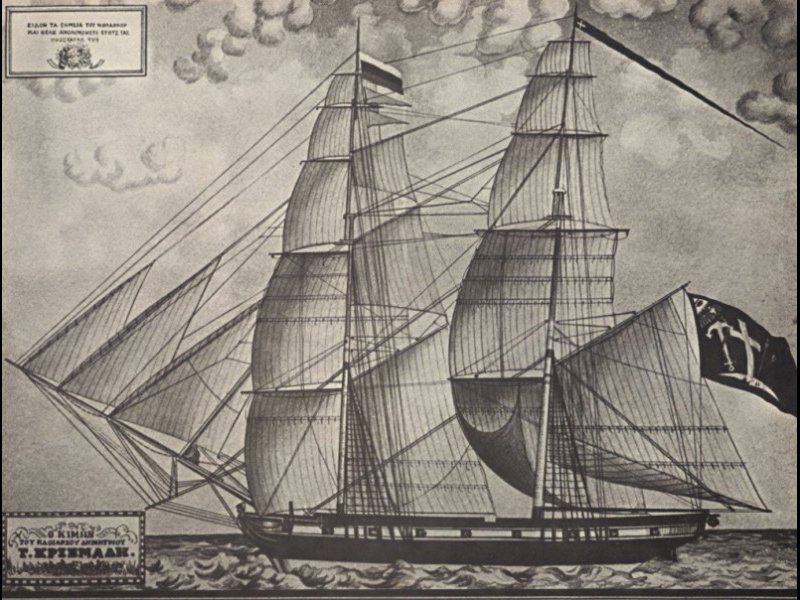
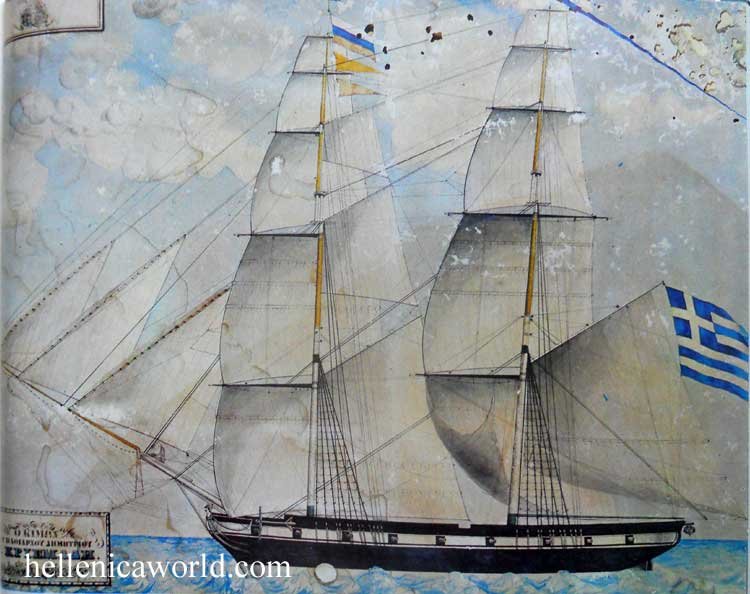
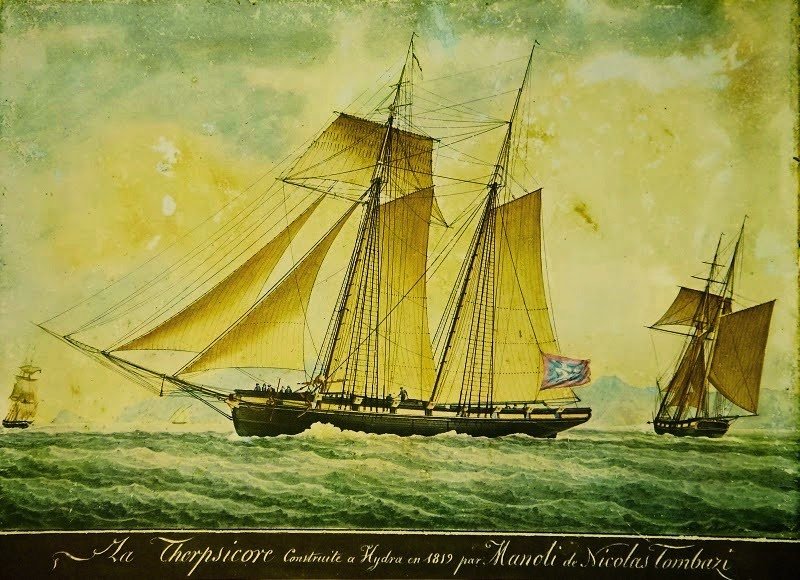

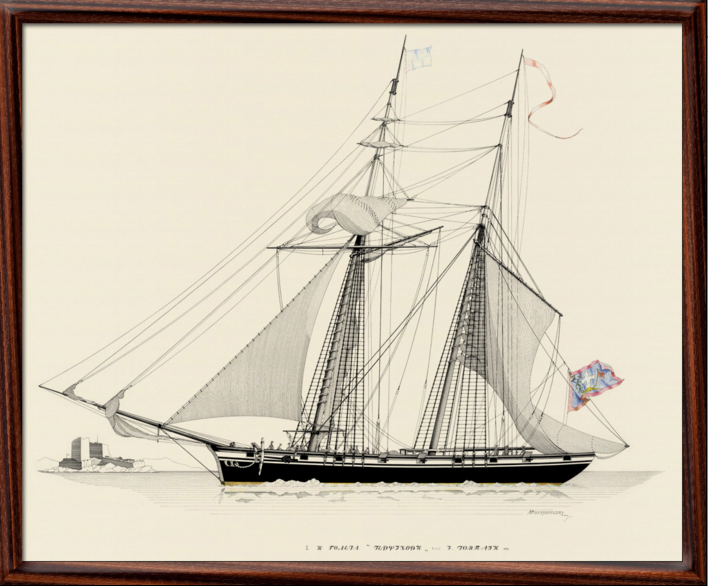
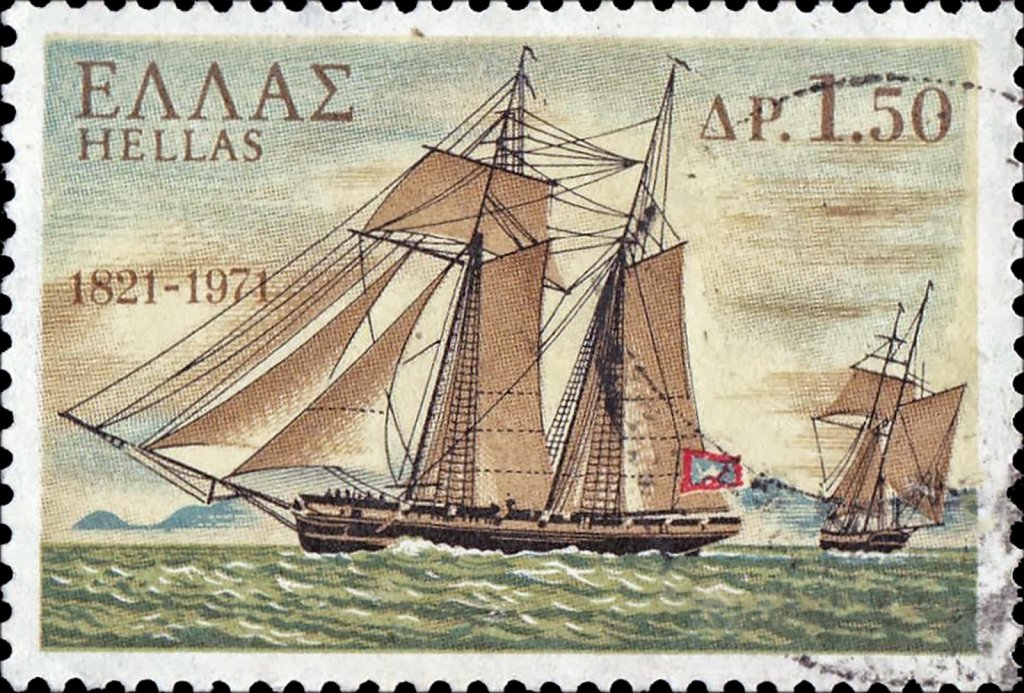
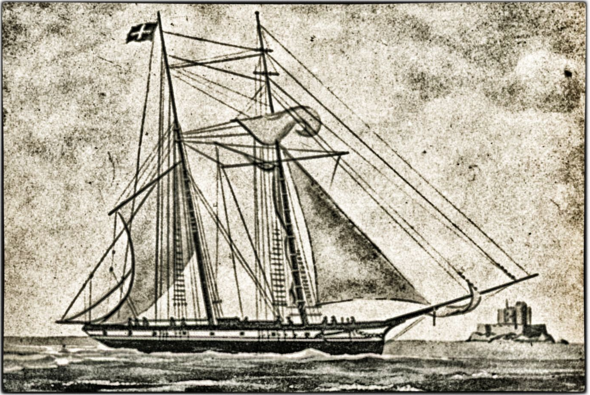
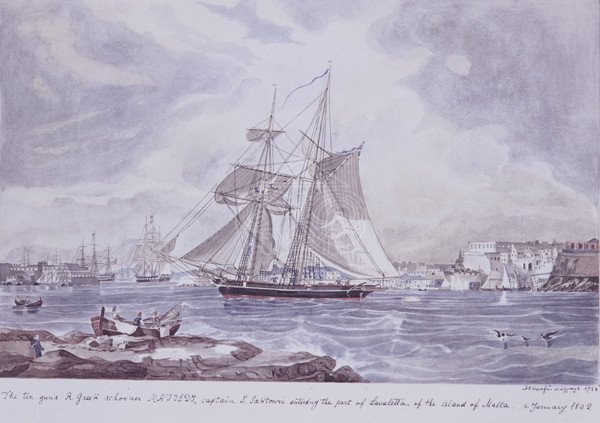
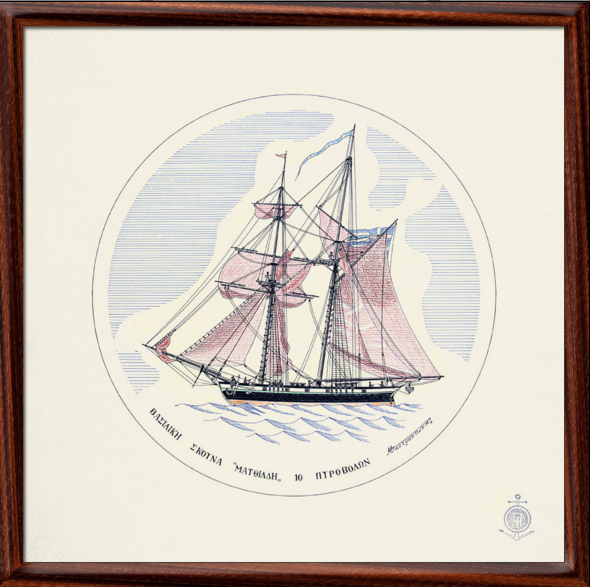
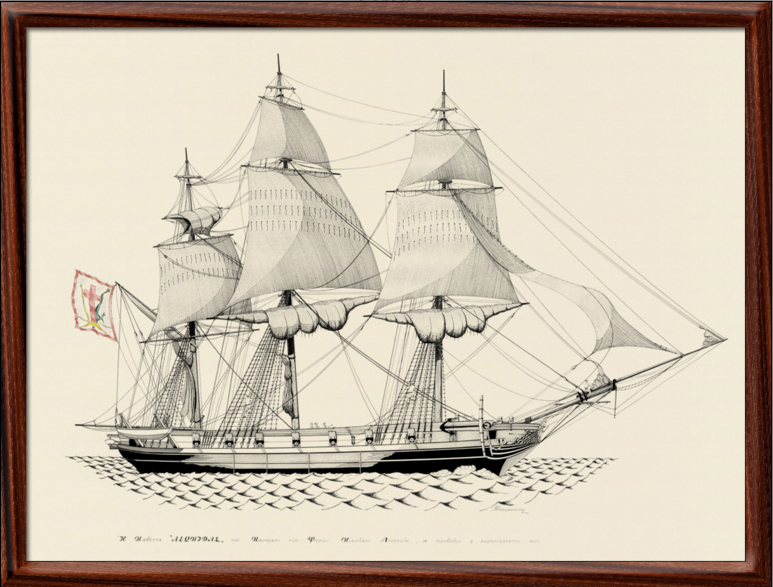
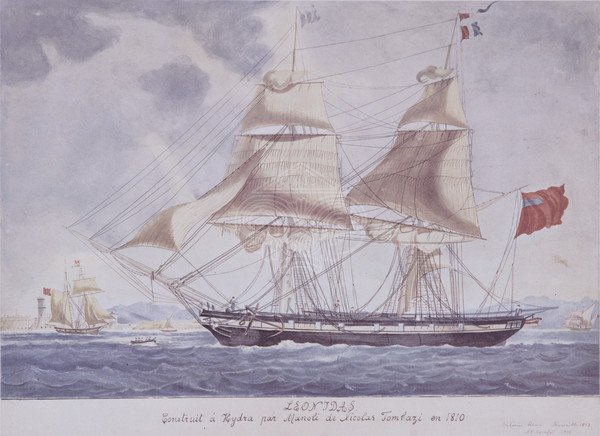
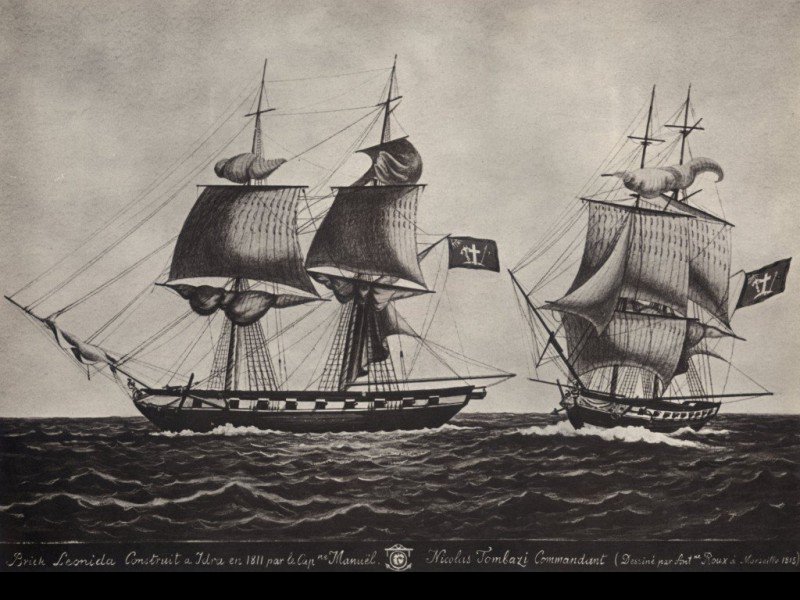
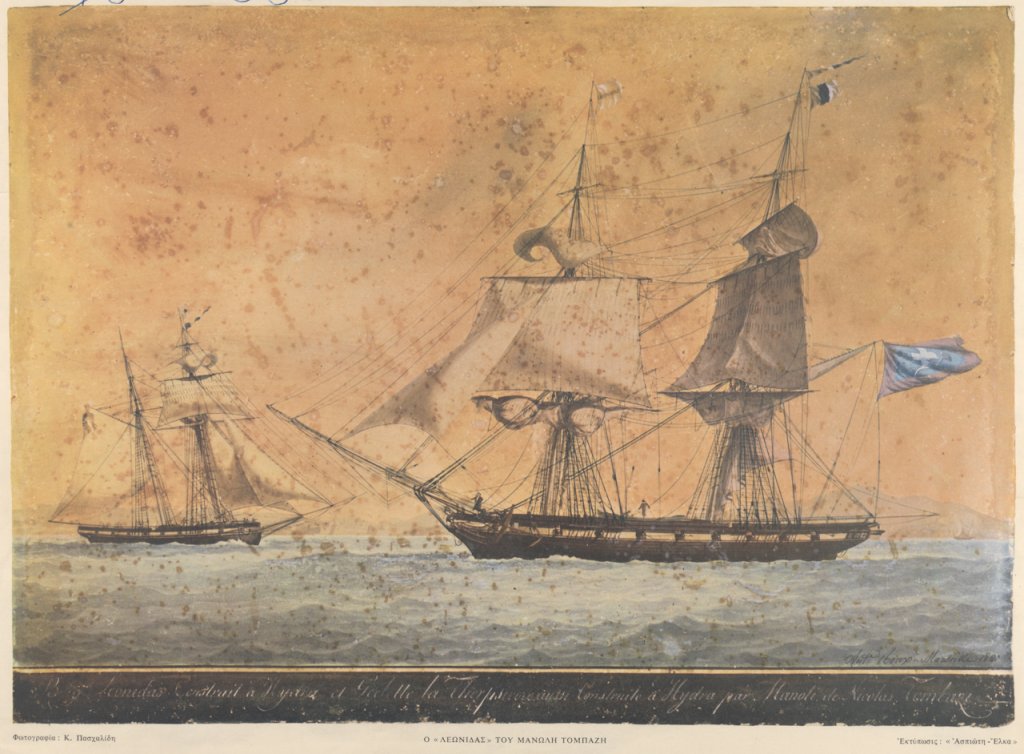
 Lenght: 22,72 meters
Lenght: 22,72 meters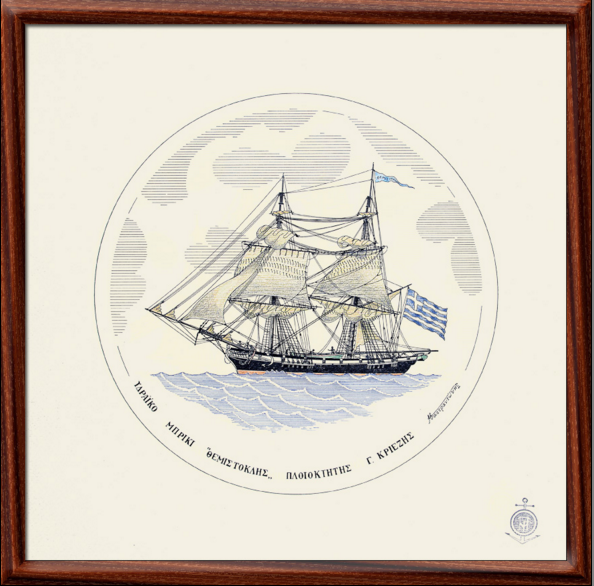
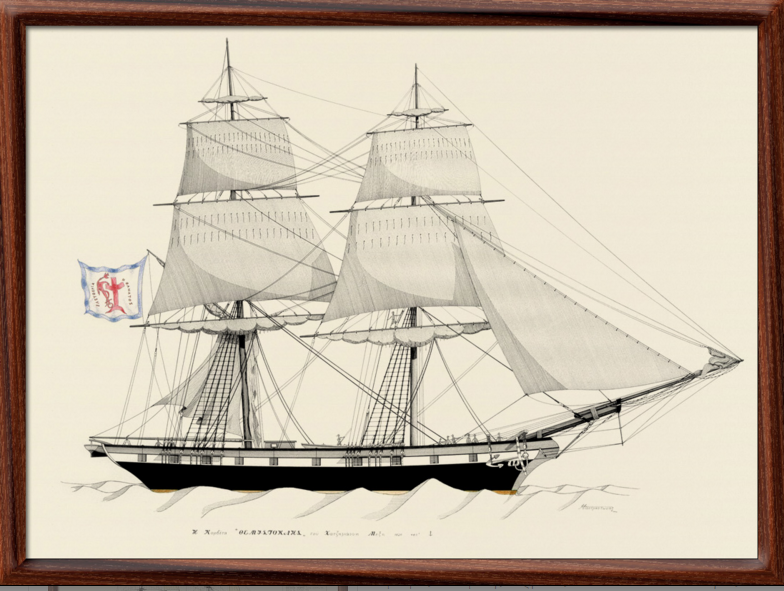
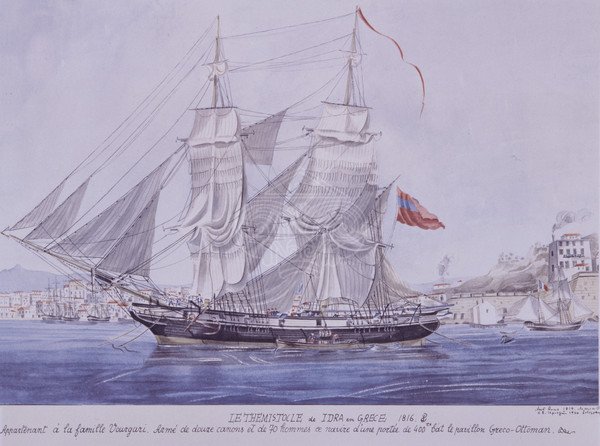
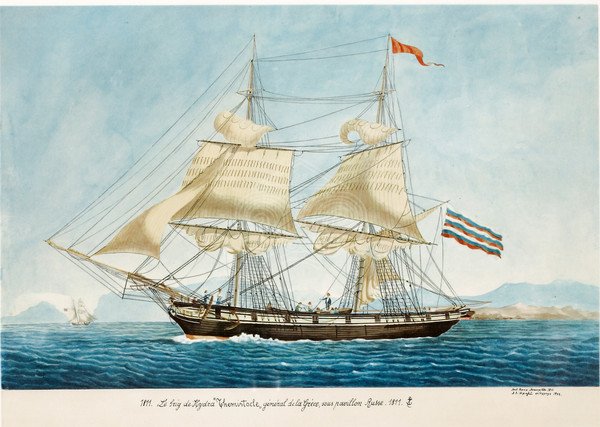
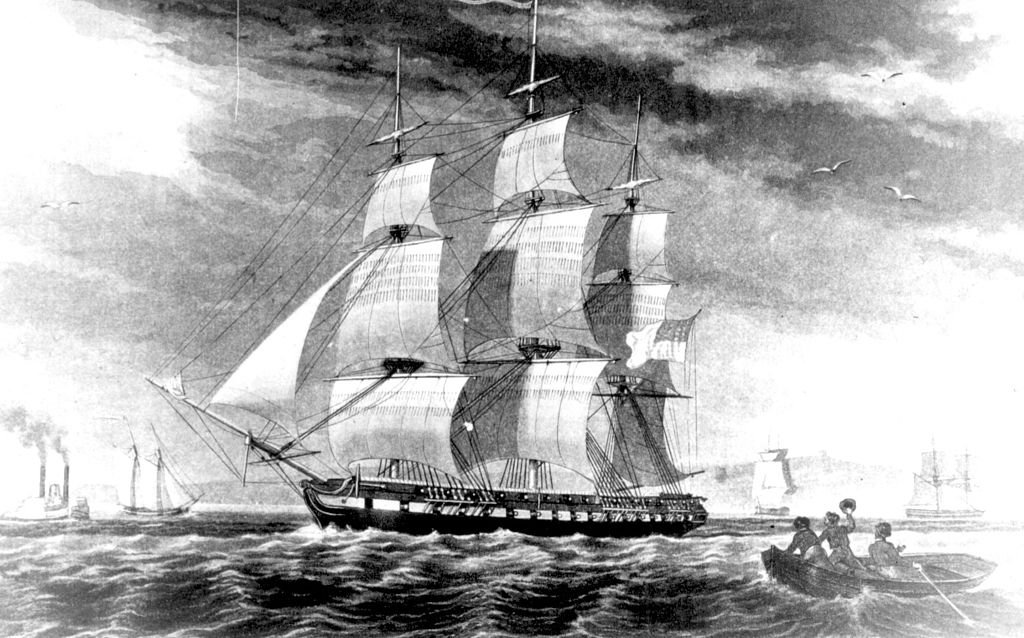









Collection of Greek ships
in Nautical/Naval History
Posted
Thank you all for the support!If you ever come across anything related to this thread don't hesitate to post it!